|
Energy drinks have become a popular beverage choice among various age groups, promising quick boosts in energy, alertness, and physical performance. However, scientific literature increasingly highlights a range of adverse health effects associated with their consumption. Role of active ingredients within Energy drinksOne of the primary ingredients in energy drinks is caffeine. Known for its ability to increase alertness and reduce fatigue, caffeine is a central nervous system stimulant that affects the body in several ways. One critical action of caffeine is its ability to block adenosine receptors. Adenosine is a neurotransmitter that typically promotes relaxation and sleep by dilating blood vessels. By blocking these receptors, caffeine prevents blood vessels from relaxing, which can lead to increased blood pressure. Additionally, the blockage of adenosine receptors leads to an accumulation of adenosine in the blood. This rise in adenosine levels activates the sympathetic nervous system, which is responsible for the body's fight-or-flight response. Consequently, there is an increase in the production of stress hormones such as adrenaline and cortisol. These changes can lead to heightened anxiety, nervousness, and even palpitations. Guarana is another common ingredient found in energy drinks. This plant, native to the Amazon basin, contains seeds that are exceptionally rich in caffeine, often surpassing the caffeine content found in coffee beans. The inclusion of guarana in energy drinks amplifies their overall stimulatory effects, making the beverages even more potent. The high caffeine content in guarana adds to the risk of overconsumption of caffeine when individuals drink energy beverages, especially if they also consume other caffeinated products like coffee or tea throughout the day. This excessive intake can exacerbate the negative side effects of caffeine, including jitteriness, insomnia, and heart palpitations. B vitamins are essential nutrients that play a crucial role in various bodily functions, including energy production and brain function. Energy drinks often contain high levels of B vitamins, such as B6 and B12, to promote energy and metabolic function. While B vitamins are vital for health, their effects can become problematic when consumed in large quantities alongside caffeine. In large doses, B vitamins can support the stimulatory effects of caffeine and guarana, potentially leading to overstimulation. This can result in adverse effects such as increased heart rate, anxiety, and restlessness. Moreover, some people may experience side effects like gastrointestinal disturbances or allergic reactions due to high doses of B vitamins. Taurine is a common additive in energy drinks, contributing to their stimulating effects. It can interact with caffeine to induce intracellular calcium release. This process can disrupt the normal calcium balance within cells, particularly in the heart and muscles. According to a study published in Reviews in Cardiovascular Medicine, "short term exposure to taurine increases intracellular levels of calcium in vascular smooth muscle cells and the heart, leading to a positive inotropic effect." Positive inotropic agents, including caffeine, increase the amount of calcium available in heart cells, enhancing the heart's ability to contract more forcefully. While this can be beneficial in certain medical situations, excessive stimulation from such agents poses potential risks. Despite these concerns, taurine itself has numerous health benefits when consumed appropriately. a deeper dive into taurineTaurine, a unique amino acid, plays several critical roles in the body. Unlike many other amino acids, taurine is not used to build proteins. Instead, it supports nerve growth, produces bile salts, aids in digestion, and helps maintain proper hydration. Taurine is classified as a "conditionally essential" or semi-essential amino acid. This means that while the body can naturally produce taurine, supplementation might be necessary under certain conditions. For example, infants and individuals with specific medical conditions might need additional taurine. Taurine acts as an antioxidant and anti-inflammatory agent, which may help combat sarcopenia, an age-related condition characterized by the loss of muscle mass and function. Taurine is also the most abundant source of sulfur in the body and is required for a wide range of physiological processes, including immune function, nervous system health, metabolism, and digestion. Recent research, published in the June 2023 issue of the journal Science, highlights taurine's role in promoting longevity and healthy aging. This underscores the importance of obtaining taurine from natural sources rather than relying on synthetic forms found in energy drinks. Taurine is abundant in animal foods such as seafood, red meat, poultry, and dairy products. Vegans, however, may need to consider high-quality taurine supplements since they do not consume these foods. While the body can synthesize some taurine, the amount produced may not be sufficient, especially as one ages and the body's ability to synthesize taurine diminishes. Taurine is a vital nutrient with numerous health benefits, particularly when consumed through whole foods or high-quality supplements. While energy drinks often contain taurine, they are not a safe or reliable source of this or other essential nutrients. For those looking to boost their taurine intake, focusing on natural dietary sources or appropriate supplementation is key to reaping its health benefits without the risks associated with energy drinks. Known adverse health effects
Pharmacologic Actions of Energy Drinks
Increase in sudden cardiac arrestEnergy drinks have come under intense scrutiny after research linked their consumption to sudden cardiac arrest. The blend of stimulating ingredients in energy drinks could significantly jeopardize heart health, especially in individuals with specific genetic heart conditions. Researchers from the Mayo Clinic have suggested that energy drinks might be "arrhythmogenic foods," which could heighten the risk of sudden cardiac arrest. Sudden cardiac arrest happens when there is an abrupt failure in the heart's electrical system, causing it to stop beating. This can result in arrhythmia, or an irregular heartbeat, such as ventricular fibrillation—the leading cause of cardiac arrest. Ventricular fibrillation is characterized by a heartbeat so rapid that the heart quivers instead of pumping blood effectively. Researchers suggested that the highly stimulating and unregulated ingredients in these beverages might alter heart rate, blood pressure, cardiac contractility, and cardiac repolarization, potentially leading to arrhythmias. Energy drinks usually contain a high amount of caffeine—ranging from 80 milligrams (mg) to 300 mg in a 16-ounce serving—along with other stimulant ingredients. Caffeine itself has been associated with sudden cardiac death in previous studies. Recently, Panera Bread removed caffeinated lemonade from its menu after lawsuits alleged the product caused two deaths from cardiac arrest. While the relative risk of sudden death after consuming an energy drink is small, the absolute risk for patients with a known genetic heart condition is concerning. For these individuals, the risks and benefits of consuming energy drinks should be carefully considered. The researchers concluded that there should be an early warning about the potential risks of these drinks for people with genetic heart diseases. How to boost energy naturallyIf your energy is lagging and you're struggling with brain fog, energy drinks are not the answer. While they may provide a temporary boost, they come with significant health risks. Instead, optimizing your mitochondrial function is one of the most effective and sustainable strategies to increase your cellular energy. Mitochondria are the powerhouses of your cells, producing the energy your body needs to function. Ensuring that your mitochondria are working efficiently can have a profound impact on your energy levels and overall vitality. Here are some key steps to optimize mitochondrial function:
energy Drink AlternativesFrom a integrated perspective, the focus is on holistic and sustainable approaches to boost energy rather than quick fixes like energy drinks. Here are some better alternatives that can provide a midday energy boost: Beverages 1. Herbal Teas
2. Lemon Water with a Pinch of Sea Salt
Supplements 1. B-Complex Vitamins
2. Magnesium
3. Coenzyme Q10 (CoQ10)
4. Adaptogens
Food-Based Options 1. Protein-Rich Snacks
2. Complex Carbohydrates
1. Short Walk or Light Exercise
Incorporating these alternatives can help provide a more sustained and healthier energy boost compared to energy drinks. They not only address immediate energy needs but also support overall health and well-being. Energy drinks, while offering a temporary energy boost, pose significant health risks. From cardiovascular and mental health issues to liver damage and obesity, the adverse effects of these beverages are well-documented in scientific literature. It is crucial for consumers to be aware of these risks and consider healthier alternatives for energy and hydration. Reducing or eliminating energy drink consumption can lead to better long-term health outcomes and prevent the myriad of health issues associated with their use. ReferencesShah SA, Szeto AH, Farewell R, et al. Impact of High Volume Energy Drink Consumption on Electrocardiographic and Blood Pressure Parameters: A Randomized Trial. Journal of the American Heart Association. 2016;5(9). doi:10.1161/JAHA.115.002134.
Coppock RW, Dziwenka MM, Stowe CM. Hepatitis due to excessive ingestion of energy drinks. BMJ Case Reports. 2016;2016. doi:10.1136/bcr-2015-212522. Higgins JP, Tuttle TD, Higgins CL. Energy beverages: content and safety. Mayo Clinic Proceedings. 2010;85(11):1033-1041. doi:10.4065/mcp.2010.0381. Malik VS, Popkin BM, Bray GA, et al. Sugar-sweetened beverages, obesity, type 2 diabetes mellitus, and cardiovascular disease risk. Circulation. 2010;121(11):1356-1364. doi:10.1161/CIRCULATIONAHA.109.876185. Costa-Valle MT, Tonieto BD, Altknecht L, Cunha CD, Fão N, Cestonaro LV, Göethel G, Garcia SC, Leal MB, Dallegrave E, Arbo MD. Energy drink and alcohol combination leads to kidney and liver alterations in rats. Toxicol Appl Pharmacol. 2018 Sep 15;355:138-146. doi: 10.1016/j.taap.2018.06.024. Epub 2018 Jun 27. PMID: 29959998. Hussain A, Jiji AK, Barke P, Biswas S, Tabrez SSM. Cardiovascular Pathologies Associated with Excessive Energy Drink Consumption: A Review. Crit Rev Eukaryot Gene Expr. 2018;28(2):107-113. doi: 10.1615/CritRevEukaryotGeneExpr.2018021703. PMID: 30055536. Clapp O, Morgan MZ, Fairchild RM. The top five selling UK energy drinks: implications for dental and general health. Br Dent J. 2019 Apr;226(7):493-497. doi: 10.1038/s41415-019-0114-0. PMID: 30980003. Al-Shaar L, Vercammen K, Lu C, Richardson S, Tamez M, Mattei J. Health Effects and Public Health Concerns of Energy Drink Consumption in the United States: A Mini-Review. Front Public Health. 2017 Aug 31;5:225. doi: 10.3389/fpubh.2017.00225. PMID: 28913331; PMCID: PMC5583516. Kim H, Park J, Lee S, Lee SA, Park EC. Association between energy drink consumption, depression and suicide ideation in Korean adolescents. Int J Soc Psychiatry. 2020 Jun;66(4):335-343. doi: 10.1177/0020764020907946. Epub 2020 Feb 29. PMID: 32114878. Utter J, Denny S, Teevale T, Sheridan J. Energy drink consumption among New Zealand adolescents: Associations with mental health, health risk behaviours and body size. J Paediatr Child Health. 2018 Mar;54(3):279-283. doi: 10.1111/jpc.13708. Epub 2017 Sep 14. PMID: 28905482. Faris MAE, Jahrami H, Al-Hilali MM, Chehyber NJ, Ali SO, Shahda SD, Obaid RS. Energy drink consumption is associated with reduced sleep quality among college students: a cross-sectional study. Nutr Diet. 2017 Jul;74(3):268-274. doi: 10.1111/1747-0080.12289. Epub 2016 Jun 9. PMID: 28731611. Park S, Lee Y, Lee JH. Association between energy drink intake, sleep, stress, and suicidality in Korean adolescents: energy drink use in isolation or in combination with junk food consumption. Nutr J. 2016 Oct 13;15(1):87. doi: 10.1186/s12937-016-0204-7. PMID: 27737671; PMCID: PMC5064784. Basrai M, Schweinlin A, Menzel J, Mielke H, Weikert C, Dusemund B, Putze K, Watzl B, Lampen A, Bischoff SC. Energy Drinks Induce Acute Cardiovascular and Metabolic Changes Pointing to Potential Risks for Young Adults: A Randomized Controlled Trial. J Nutr. 2019 Mar 1;149(3):441-450. doi: 10.1093/jn/nxy303. PMID: 30805607. Toblin RL, Adrian AL, Hoge CW, Adler AB. Energy Drink Use in U.S. Service Members After Deployment: Associations With Mental Health Problems, Aggression, and Fatigue. Mil Med. 2018 Nov 1;183(11-12):e364-e370. doi: 10.1093/milmed/usy205. PMID: 30169675. Higbee MR, Chilton JM, El-Saidi M, Duke G, Haas BK. Nurses Consuming Energy Drinks Report Poorer Sleep and Higher Stress. West J Nurs Res. 2020 Jan;42(1):24-31. doi: 10.1177/0193945919840991. Epub 2019 Apr 8. PMID: 30957708. Al Yacoub R, Luczkiewicz D, Kerr C. Acute kidney injury and hepatitis associated with energy drink consumption: a case report. J Med Case Rep. 2020 Jan 29;14(1):23. doi: 10.1186/s13256-019-2340-0. PMID: 31992329; PMCID: PMC6988357. Gupta N, Padidam S, Tewari A. Acute macular neuroretinopathy (AMN) related to energy drink consumption. BMJ Case Rep. 2019 Dec 15;12(12):e232144. doi: 10.1136/bcr-2019-232144. PMID: 31843776; PMCID: PMC6936580. Garg A, Rodriguez A, Lewis JT, Bansal R, Brahmbhatt B. Energy Drinks: A Reversible Risk Factor for Atrophic Gastritis and Gastric Intestinal Metaplasia. Cureus. 2020 Dec 26;12(12):e12298. doi: 10.7759/cureus.12298. PMID: 33520500; PMCID: PMC7834582. Haroun H, Mohamed E, El Shahat AER, Labib H, Atef M. Adverse effects of energy drink on rat pancreas and the therapeutic role of each of bone marrow mesenchymal stem cells and Nigella Sativa oil. Folia Morphol (Warsz). 2020;79(2):272-279. doi: 10.5603/FM.a2019.0069. Epub 2019 Jul 1. PMID: 31257565. Shah SA, Chu BW, Lacey CS, Riddock IC, Lee M, Dargush AE. Impact of Acute Energy Drink Consumption on Blood Pressure Parameters: A Meta-analysis. Ann Pharmacother. 2016 Oct;50(10):808-15. doi: 10.1177/1060028016656433. Epub 2016 Jun 23. PMID: 27340146. Nowak D, Gośliński M, Nowatkowska K. The Effect of Acute Consumption of Energy Drinks on Blood Pressure, Heart Rate and Blood Glucose in the Group of Young Adults. Int J Environ Res Public Health. 2018 Mar 19;15(3):544. doi: 10.3390/ijerph15030544. PMID: 29562659; PMCID: PMC5877089. Lasheras I, Seral P, Alonso-Ventura V, Santabárbara J. The impact of acute energy drink consumption on electrical heart disease: A systematic review and meta-analysis. J Electrocardiol. 2021 Mar-Apr;65:128-135. doi: 10.1016/j.jelectrocard.2021.01.020. Epub 2021 Feb 9. PMID: 33631440. Mansy, Wael, et al. “Effects of Chronic Consumption of Energy Drinks on Liver and Kidney of Experimental Rats.” Tropical Journal of Pharmaceutical Research, vol. 16, no. 12, 12 Jan. 2018, p. 2849, https://doi.org/10.4314/tjpr.v16i12.8. Graneri, L., Lam, V., D'Alonzo, Z., Nesbit, M., Mamo, J. C., & Takechi, R. (2021). The consumption of energy drinks induces blood-brain barrier dysfunction in wild-type mice. Frontiers in nutrition, 8, 668514. Valle, M. C., Couto-Pereira, N. S., Lampert, C., Arcego, D. M., Toniazzo, A. P., Limberger, R. P., ... & Leal, M. B. (2018). Energy drinks and their component modulate attention, memory, and antioxidant defences in rats. European journal of nutrition, 57, 2501-2511.
0 Comments
Allergies are a prevalent health concern affecting millions worldwide, triggered by the immune system's hypersensitive response to typically harmless substances. To comprehend allergies fully, it's crucial to delve into the intricate workings of the immune system, the specific mechanisms underlying TH2 allergic responses, and how a holistic approach rooted in addressing the root causes can offer relief. The Immune System: A Complex DefenderThe immune system is our body's defense mechanism against pathogens, toxins, and other foreign invaders. It comprises a sophisticated network of cells, tissues, and organs working together to identify and neutralize threats while maintaining tolerance to self. The TH2 allergic response is a specific immune reaction characterized by the activation of T-helper 2 (TH2) cells and the release of pro-inflammatory cytokines in response to exposure to allergens. This response is distinct from other immune responses, such as the TH1 response, which plays a role in combating intracellular pathogens. TH2 Allergic Response: Unraveling the MechanismsIn TH2-mediated allergies, the immune system overreacts to innocuous substances, such as pollen, pet dander, or certain foods. While pollen, dust mites, pet dander, and certain foods are common allergens that can induce allergic reactions in susceptible individuals, exposure to environmental toxins and pollutants can also contribute to allergic sensitization and exacerbation of symptoms. Environmental toxins such as air pollutants, industrial chemicals, pesticides, heavy metals, and volatile organic compounds (VOCs) have been associated with an increased risk of allergies and asthma. These substances can irritate the respiratory tract, disrupt the immune system, and promote inflammation, making individuals more susceptible to allergic responses. For example, air pollutants like ozone, nitrogen dioxide, sulfur dioxide, and particulate matter have been linked to respiratory allergies and asthma exacerbations. Exposure to indoor pollutants such as mold, tobacco smoke, volatile organic compounds (VOCs) from household products, and formaldehyde from building materials can also trigger allergic reactions and worsen symptoms in allergic individuals. Furthermore, certain environmental toxins have been shown to disrupt the normal functioning of the immune system, leading to dysregulation of immune responses and increased susceptibility to allergies. For instance, exposure to endocrine-disrupting chemicals (EDCs) like bisphenol A (BPA) and phthalates during critical periods of development has been implicated in the development of allergic diseases later in life. This exaggerated response involves the activation of TH2 cells and the release of pro-inflammatory cytokines, such as interleukin-4 (IL-4), interleukin-5 (IL-5), and interleukin-13 (IL-13). Upon exposure to an allergen, antigen-presenting cells (APCs) process and present the allergen to TH2 cells, initiating an immune cascade. TH2 cells then stimulate B cells to produce allergen-specific immunoglobulin E (IgE) antibodies, which bind to mast cells and basophils, priming them for future encounters with the allergen. Subsequent exposure to the allergen triggers the cross-linking of IgE antibodies on mast cells and basophils, leading to the release of inflammatory mediators, such as histamine, leukotrienes, and cytokines. This cascade of events culminates in the classic symptoms of allergies, including itching, sneezing, nasal congestion, and inflammation. Summary: th2 Allergy response
Upon re-exposure to the allergen, cross-linking of IgE antibodies on mast cells and basophils triggers the release of inflammatory mediators, such as histamine, leukotrienes, and cytokines. This cascade of events leads to the classic symptoms of allergy, including itching, sneezing, nasal congestion, and inflammation. 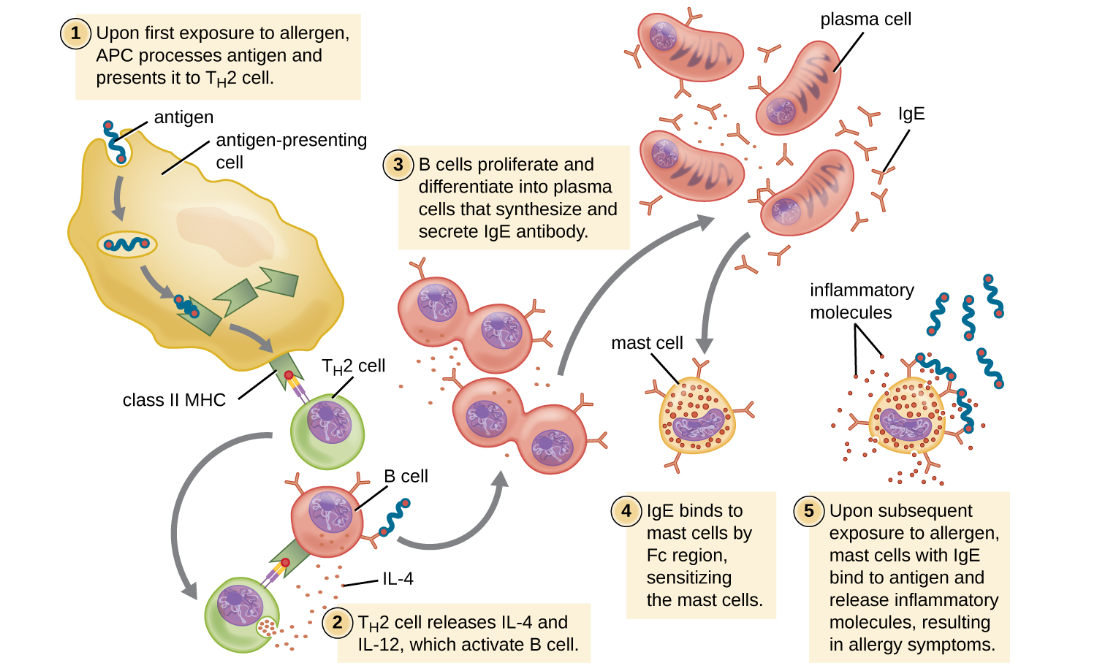 On first exposure to an allergen in a susceptible individual, antigen-presenting cells process and present allergen epitopes with major histocompatibility complex (MHC) II to T helper cells. B cells also process and present the same allergen epitope to TH2 cells, which release cytokines IL-4 and IL-13 to stimulate proliferation and differentiation into IgE-secreting plasma cells. The IgE molecules bind to mast cells with their Fc region, sensitizing the mast cells for activation with subsequent exposure to the allergen. With each subsequent exposure, the allergen cross-links IgE molecules on the mast cells, activating the mast cells and causing the release of preformed chemical mediators from granules (degranulation), as well as newly formed chemical mediators that collectively cause the signs and symptoms of type I hypersensitivity reactions. Relation to TH1 and Other Immune ResponsesThe TH1 response is involved in combating intracellular pathogens, such as viruses and certain bacteria. It is characterized by the activation of T-helper 1 (TH1) cells and the production of interferon-gamma (IFN-gamma) and other cytokines that promote cellular immunity. In a healthy immune system, there is a delicate balance between TH1 and TH2 responses. Imbalances, such as excessive TH2 activity or insufficient TH1 activity, can lead to immune dysfunction and increased susceptibility to infections, autoimmune diseases, or allergies. Regulatory T cells (Tregs) play a critical role in maintaining immune balance by suppressing excessive immune responses, including both TH1 and TH2 responses. Dysfunction of Tregs can contribute to immune-related disorders. In addition to TH1 and TH2 responses, the immune system employs various other mechanisms to combat pathogens and maintain homeostasis, including innate immunity, antibody-mediated immunity, and cell-mediated immunity. Understanding the interplay between different immune responses, including the TH2 allergic response and the TH1 response, is crucial for comprehending immune-related disorders and developing targeted therapeutic interventions. Balancing immune function and modulating specific immune pathways can help mitigate allergic reactions and restore immune equilibrium. Conventional approachesTH2 allergies are a common debilitation of quality of life for many individuals. While conventional over-the-counter pharmaceutical drugs are often used to manage symptoms, they frequently mask the underlying issue without addressing the root cause and can come with undesirable side effects. For example, Benadryl has been observed to result in birth defects and infant mortality. Common Pharmaceutical Drugs for Allergies:
Allergy supplement stack: A Natural alternativeFor those seeking alternatives to pharmaceutical drugs, a stack of naturally occurring compounds designed to supplant their use has emerged. This stack includes: 1. Whole Food Vitamin C: Known for its antioxidant properties and immune system support, whole food vitamin C can help regulate the immune response and reduce inflammation associated with allergies. 2. N-Acetyl Cysteine (NAC): NAC is a precursor to glutathione, a powerful antioxidant that helps combat oxidative stress and regulate the immune system. It has been shown to reduce inflammation and improve respiratory function in individuals with allergies. 3. Guduchi (Tinospora Cordifolia): A traditional Ayurvedic herb, guduchi has been used for centuries to support immune function and reduce allergic reactions. It possesses anti-inflammatory and immunomodulatory properties, making it beneficial for managing allergies. 4. Bromelain: Derived from pineapple, bromelain is a mixture of enzymes known for its anti-inflammatory and mucolytic properties. It can help alleviate nasal congestion and respiratory symptoms associated with allergies. Pharmacologic Effects of Allergy Supplement Stack:
Holistic Approach to Allergies: addressing the root causeIn contrast to conventional approaches that often focus solely on symptom management with pharmaceutical drugs, holistic modalities rooted in functional medicine address the underlying imbalances contributing to allergic responses. Here's how:
By addressing the root causes of allergies and promoting overall health and resilience, a holistic approach rooted in functional medicine offers a comprehensive solution for individuals seeking lasting relief from allergic symptoms. In conclusion, allergies represent a multifaceted challenge stemming from immune dysregulation and environmental triggers. By embracing a holistic approach rooted in functional medicine principles, individuals can effectively manage allergies, restore immune balance, and reclaim vitality and well-being. referencesKim, Hyon-Jeen, et al. “Nrf2 Activation by Sulforaphane Restores the Age-Related Decrease of TH1 Immunity: Role of Dendritic Cells.” Journal of Allergy and Clinical Immunology, vol. 121, no. 5, 1 May 2008, pp. 1255-1261.e7, www.jacionline.org/article/S0091-6749(08)00148-6/fulltext, https://doi.org/10.1016/j.jaci.2008.01.016
Engwerda, C. R., et al. “Bromelain Modulates T Cell and B Cell Immune Responses in Vitro and in Vivo.” Cellular Immunology, vol. 210, no. 1, 25 May 2001, pp. 66–75, pubmed.ncbi.nlm.nih.gov/11485354/, https://doi.org/10.1006/cimm.2001.1807. Singh, S. M., Singh, N., & Singh, V. (2009). Immunomodulatory and anti-tumor actions of Tinospora cordifolia (Guduchi). Natural Products: Chemistry, Biochemistry and Pharmacology, 114, 35-43. Belwal, T., Devkota, H. P., Hassan, H. A., Ahluwalia, S., Ramadan, M. F., Mocan, A., & Atanasov, A. G. (2018). Phytopharmacology of Acerola (Malpighia spp.) and its potential as functional food. Trends in food science & technology, 74, 99-106. Gilboa, Suzanne M., et al. “Use of Antihistamine Medications during Early Pregnancy and Isolated Major Malformations.” Birth Defects Research Part A: Clinical and Molecular Teratology, vol. 85, no. 2, Feb. 2009, pp. 137–150, https://doi.org/10.1002/bdra.20513. Accessed 10 Dec. 2019. 25-30 minutes
8 pancakes
45 minutes
3-6 servings Mini Pizza Crusts
30 minutes
6 donuts Donuts
15 minutes
10-20 cookies
The Significance of Optimal NutritioN Embarking on the beautiful journey of motherhood, prioritizing optimal nutrition is crucial for both you and your baby. Whole Foods from nature, untouched by artificial processes, form the foundation for a healthy pregnancy. These foods provide essential nutrients, promoting well-being and supporting the growth of your little one. Modern Challenges in Accessing Nutrient-Dense FoodsWhile our ancestors thrived on Whole Foods, modern practices in agriculture have introduced challenges. Pesticides, herbicides, and chemical fertilizers diminish the nutrient density of our food. This impacts hormonal balance and overall health, especially for expecting mothers. Navigating through these challenges is vital for a vibrant pregnancy. Supplements as a Response to Agricultural ChangesAcknowledging the hurdles posed by conventional agriculture, supplements become a valuable tool. However, it's crucial to recognize that supplements are secondary to Whole Foods. Quality matters; opt for supplements derived from whole food sources to ensure optimal health for both you and your baby. Synthetic ingredients and harmful additives can have adverse effects. The Three Tiers of Optimal prenatal NutritionGiven the aforementioned information, we find ourselves facing a choice to move forward. Below is a list of pathways to optimal nutrition in order of priority:
FullWell: A PreNatal RecommendationIf you are an expecting mother searching for the perfect multivitamin prenatal, consider FullWell – a comprehensive solution delivering optimal, evidence-based forms and doses of essential nutrients in one potent yet easily digestible formula. FullWell stands out by offering fertility micronutrients, such as folate, B12, and chelated minerals, in active, bioavailable forms. These forms ensure that your body can efficiently absorb and utilize these crucial nutrients, promoting a healthy pregnancy. Unlike some other prenatals that may skimp on vital components, FullWell includes essential pregnancy nutrients like choline and magnesium, recognizing their importance for both maternal and fetal well-being. Moreover, FullWell goes the extra mile by being free of common allergens. Gluten, wheat, dairy, peanuts, tree nuts, shellfish, eggs, sesame, corn, and soy are all excluded from the formula. This allergen-free profile ensures that you can enjoy the benefits of FullWell without worrying about potential sensitivities, allowing for a comfortable and worry-free pregnancy journey. Choosing FullWell means choosing a prenatal multivitamin that prioritizes both the quantity and quality of nutrients, supporting you on your path to a healthy and vibrant pregnancy. Remember, your journey into motherhood is unique, and prioritizing your health through optimal nutrition sets the stage for a thriving pregnancy.
8-9 ounces
30 minutes
30 minutes
10 - 15 bites
Collagen Peptides are an easy way to increase the nutrient density of any recipe! Turn everything from smoothies to baked goods into anti-aging, gut-healing superfoods with just one flavor-free scoop.
In the realm of emerging wellness technologies, red and near-infrared light therapy stands out as a beacon of potential health benefits. This non-invasive treatment, also known as photobiomodulation, has gained attention for its positive effects on various aspects of health, particularly in skin and muscle recovery. Let's delve into the illuminating world of red and near-infrared light therapy and explore how it can enhance your well-being. Photobiomodulation (PBM)Photobiomodulation, often referred to as PBM therapy, is a non-invasive and non-thermal treatment that utilizes light to stimulate various cellular processes. This therapeutic approach harnesses the power of specific wavelengths of light to enhance cellular function, promote tissue repair, and reduce inflammation. Among the key contributors to PBM are red and near-infrared (NIR) light. The Sun: the Original PhotobiomodulatorThe Sun emits energy in various forms, each associated with specific ranges of the electromagnetic spectrum. Here's a breakdown of the forms of energy emitted by the Sun: 1. Visible Light: This is the portion of solar radiation that is visible to the human eye, creating the spectrum of colors we perceive.
Red and Near-Infrared Light TherapyRed and near-infrared (NIR) light therapy involves exposing the body to light in the red (600-700 nanometers) and NIR (700-1100 nanometers) spectrums. These wavelengths are known to penetrate the skin and underlying tissues, interacting with cellular structures and triggering beneficial responses. Skin Layers and Light Penetration: The human skin consists of several layers, each with distinct properties and functions. Understanding how red and NIR light navigate through these layers provides insight into their therapeutic reach.
As red and NIR light journey through the skin layers, they engage with chromophores—molecules that absorb specific wavelengths of light. Key chromophores include cytochrome c oxidase, found in mitochondria, and various light-absorbing proteins and enzymes. These interactions trigger a cascade of cellular events, such as enhanced ATP production, increased circulation, and modulation of inflammatory responses. Understanding the depth of light penetration is crucial for tailoring red and NIR therapy to specific therapeutic goals. While red light may be more suitable for surface-level applications like skin rejuvenation, NIR light's ability to reach deeper tissues makes it a preferred choice for addressing musculoskeletal conditions and promoting systemic benefits. Mechanisms of Action
Influence of NIR on WaterNIR light can affect the structure of water molecules through a process known as photodissociation or photolysis. This process involves breaking molecular bonds using light energy. While NIR light does not directly ionize water molecules, it can influence their structure in several ways:
The concept of NIR light influencing the structuring of water into exclusion zone (EZ) water, also known as the fourth phase of water, is associated with the work of Dr. Gerald Pollack. According to Pollack's research, EZ water differs in its molecular arrangement from ordinary water, showing a structured pattern that extends beyond the traditional liquid structure. Formation of Exclusion Zone (EZ) Water:
It's important to note that the exact mechanisms and effects of NIR light on water structure are complex and may vary depending on factors such as the wavelength of the light, intensity, and exposure duration. The idea of NIR light structuring water has gained attention in various fields, including alternative health practices, and environmental research. The field of water structuring and its potential implications for cellular biology is still an area of active investigation within scientific communities. Harnessing the Power of Hormetic Stress: The Biphased Dose Response of Red Light TherapyRed light therapy emerges not only as a therapeutic modality but as a potent hormetic stressor, operating on a biphasic dose-response principle. In the realm of hormesis, a phenomenon where exposure to low doses of stressors triggers adaptive responses, red light therapy takes center stage by demonstrating a nuanced and beneficial relationship with the body's stress response. Hormesis, in its essence, is the body's ability to adapt and respond positively to low doses of stress. Red light therapy, with its application of low levels of red and NIR light, acts as a hormetic stressor, initiating adaptive responses that strengthen cellular resilience and overall well-being. The biphasic dose response of red light therapy implies that its effects on the body follow a distinctive pattern. At lower doses, red light elicits a positive response, triggering cellular repair, mitochondrial enhancement, and anti-inflammatory effects. As the dose increases, the beneficial effects continue, but there's a point where diminishing returns occur. Understanding this biphasic response allows for optimized use of red light therapy for maximum benefit. Understanding the biphasic dose response of red light therapy allows for a personalized and optimal application. Tailoring the dose to individual needs ensures that the therapy remains within the hormetic zone, where the benefits are maximized without reaching a point of diminishing returns. Incorporating red light therapy into your wellness routine becomes a strategic choice for embracing hormetic stress. The biphasic dose response unfolds a journey of cellular resilience, mitochondrial optimization, and enhanced well-being, showcasing red light therapy as a dynamic and adaptive ally in the pursuit of holistic health. Applications: The Science Behind Red and Near-Infrared Light Therapy
Incorporating Light Therapy into Your Routine
Experience Revolutionary Healing with Boncharge Red Light Therapy DevicesUnlock the potential of cutting-edge healing with Boncharge Red Light Therapy devices, designed to redefine your wellness journey. These state-of-the-art devices boast a range of features aimed at maximizing therapeutic benefits while prioritizing your safety and comfort.
For as little as 10 minutes per day (ideally in the morning), you can incorporate Boncharge Red Light Therapy devices into your wellness routine and embark on a journey of transformative healing. Elevate your experience with the assurance of low EMF, flicker-free LEDs, convenient built-in timers, and the flexibility to customize your sessions. Boncharge is not just a device; it's a commitment to evidence-based wellness, empowering you to thrive with the power of red light therapy. Safety and ConsiderationsRed and NIR light therapy is generally considered safe with minimal side effects. However, appropriate device selection, treatment duration, and wavelength specificity are crucial for optimizing therapeutic outcomes. It is very important to do a photosensitivity test prior to long sessions with your red light therapy device. To perform the test, turn on both the red and NIR functions on your red light therapy device and shine the light on an exposed part of your forearm, about 3 inches to 1 foot away, for 4 minutes. If you experience any discomfort or redness on your skin it is encouraged to not use your red light therapy device until you have sought professional advice from your doctor or healthcare provider. Illuminating cellular healingIn conclusion, red and NIR light therapy, within the realm of PBM, represents a promising avenue for promoting cellular healing and overall well-being. As research continues, the applications and benefits of this non-invasive therapy are expected to expand. Red and NIR light therapy presents a compelling avenue for enhancing skin health and muscle recovery. As this technology continues to be explored, its potential applications in various fields, from sports medicine to dermatology, are expanding. By harnessing the power of light, individuals can embark on a journey toward improved vitality, resilience, and overall well-being. As with any wellness practice, informed decisions and professional guidance contribute to a holistic approach to health. references
Whether baby wipes are toxic or not depends on the ingredients. Some popular brands, such as Huggies or Pampers, that are known for their baby scent use an astounding amount of chemicals to achieve that scent. These chemicals are toxic for both babies and the environment. Baby wipes using natural and organic ingredients typically do not contain these additional chemicals, making them wonderful non-toxic baby wipes. Common baby wipe ingredients to avoidMany moms are well-intended to select the common brands of baby wipes. Afterall, baby wipes are packed with chemicals to make them efficient, a little more durable than toilet paper, and smell beautiful. However, some of those chemicals are not good for your baby. It is in the best interest of the consumer, the mom and baby, to make sure to read the package before you purchase a pack of disposable baby wipes. Here are some ingredients to look out for: fragranceThe fragrance is a general term that is used to encompass several different ingredients. If an ingredient contributes to making the wipes smell good, it can be labeled as “fragrance.” Many of these fragrances are petro-chemicals and are therefore toxic, and some of them are just not good for your little one’s skin. Instead, opt for fragrance-free wipes. Babies naturally smell adorable! If you do wind up buying baby wipes that are scented, double-check the ingredient list. Companies can use the term fragrance to encompass harmful ingredients. They are not required to list the ingredients or chemicals that are used to make their baby wipes smell the way that they do because this is considered a trade secret. This means that if the fragrance is created using parabens, for example, the company does not have to tell you because it is in the “fragrance” category. Fragrances have been linked to all sorts of health conditions, from autoimmune issues including contact dermatitis, and migraines and respiratory issues. FormaldehydeMake no mistake - you read that right. Formaldehyde has made headlines in recent years as it’s been found in baby wipes. This chemical is a known carcinogen, meaning that it can cause cancer. It’s also a known irritant causing allergic reactions in babies. Additionally, formaldehyde is known to be:
Researchers have observed over half of the popular baby wipe brands that were tested released formaldehyde during a study. What is even scarier is that none of the wipes listed formaldehyde as an ingredient. A current examination of the scientific data collected on the exposure to formaldehyde is associated with the following health conditions and abnormal physiologic events:
TriclosanThis antibacterial ingredient found in soaps and other products has been linked to allergies, endocrine disruption, weight gain and inflammatory responses, and may aggravate the growth of liver and kidney tumors. It’s also used commonly as a preservative. However, Triclosan was recently removed from antibacterial hand soaps because it can pass through the skin, which will lead to it having an effect on the body. It’s known to cause an allergic reaction as well as disrupt hormones. When triclosan is broken down, it can turn into Dioxin, which is known to cause cancer. Here is list of the known physiologic mechanisms in which triclosan exerts it's harmful effects:
Exposure to, and the consumption of triclosan is associated with the following health conditions and abnormal physiologic events:
Propylene GlycolPropylene glycol, also known as propane-1,2-diol, is compound used for various cosmetic, pharmaceutical and industrial applications, including as a solvent, humectant, preservative, and surfactant. Propylene glycol consumption results in kidney, liver, and neurologic toxicity, and it is certainly not recommended for pregnant women. Propylene glycol is a skin irritant, it may increase the absorption of other harmful excipients, and disrupts permeability of the blood brain barrier. When used in products like baby wipes, propylene glycol is intended to increase skin absorption of any ingredients more effectively, and at a quicker rate. This results in the body absorbing all of the toxic ingredients that are found in baby wipes, so it’s best to avoid this ingredient entirely. Polyethylene GlycolPolyethylene Glycol (PEG), otherwise known as Macrogol, Carbowax and many other derivatives when combined with other substances. PEG is a synthetic chemical compound derived from petroleum that is widely used for a variety of uses, including as a moisture carrier, solvent, preservative, thickener, and much more. PEG is another chemical that will help the skin absorb the ingredients of the baby wipes. Even though it’s a different chemical that is used, it still does the same thing as propylene glycol, which helps your little one absorb chemicals which may include carcinogens, including ethylene oxide, and potentially dioxane depending on the manufacturer. PEG is classified as biologically inert by our FDA. It is the “Gold Standard” for use in many medications to increase the blood clearance time, or in other words, the time it remains in one’s system, thereby enhancing drug effect. It is also used in drug manufacturing as an excipient for long term stabilization, bulking, and other therapeutic enhancements. It is used as a coating to prevent bacterial adhesion on orthopedic screws and sutures. In addition to medical uses, PEG is also used in cosmetics, foods, industrial applications, and other health and beauty products such as soaps, shampoos, toothpastes. It is also used as an e-cigarette liquid. PEG is everywhere in our environment, which is what many have surmised has led to a high percentage of the US population developing anti-PEG antibodies. This, of course, presents a significant challenge to those who rely on this substance in their manufacturing. Scientific studies to quantify the seriousness of the problem estimate that approximately 72% of the US population has acquired anti PEG antibodies. The referenced study used blood samples taken from 1990-1999 and earlier, showing a steady increase over time in the percentage of those with antibodies to PEG, making it conservative to estimate, after two decades, that the incidence is closer to 80% today. This circumstance has concerned the medical and pharmaceutical communities as an equally effective alternative has escaped identification, although several have been suggested, and because the great cost of shifting to such an alternative. Not only is PEG a “stealth” medicinal additive, delaying blood clearance due to its properties, but it is a stealth allergen, the vast majority of the population never having heard of it and many in the healthcare industry being unaware of its antigenic properties. A physician survey found: “Although 91% of respondents were aware of antidrug antibodies in general, only 22% were aware of APA (Anti-PEG Antibody) responses. Further, there was limited awareness (35%) of PEG’s inclusion in prescribed PEGylated therapeutics.” "Scientific studies to quantify the seriousness of the problem estimate that approximately 72% of the US population has acquired anti PEG antibodies." sodium benzoateSodium benzoate is also used as a preservative, to extend the shelf-life of products, and is actually the sodium salt of benzoic acid. The substance is an odorless, crystalline powder made by combining benzoic acid and sodium hydroxide, per a December 2015 article in Biotechnology and Health Sciences. Chemical exposure and consumption of sodium benzoate is linked with a variety of health conditions and abnormal physiologic events, including but not limited to:
safe Baby wipesTerra biodegradable wipes are durable and extra moist, with an easy dispensing flip-top lid. They are cross-woven for a soft cloth-like texture that is non-irritating while cleaning baby's delicate skin. Terra provides transparency with their ingredients:
referencesLiou, Yujie Linda, et al. “Formaldehyde Release from Baby Wipes: Analysis Using the Chromotropic Acid Method.” Dermatitis, vol. 30, no. 3, May 2019, pp. 207–212, https://doi.org/10.1097/der.0000000000000478.
Steinemann, Anne. “Health and Societal Effects from Exposure to Fragranced Consumer Products.” Preventive Medicine Reports, vol. 5, Mar. 2017, pp. 45–47, https://doi.org/10.1016/j.pmedr.2016.11.011. McCann, Donna, et al. “Food Additives and Hyperactive Behaviour in 3-Year-Old and 8/9-Year-Old Children in the Community: A Randomised, Double-Blinded, Placebo-Controlled Trial.” The Lancet, vol. 370, no. 9598, Nov. 2007, pp. 1560–1567, www.thelancet.com/journals/lancet/article/PIIS0140-6736(07)61306-3/fulltext, https://doi.org/10.1016/s0140-6736(07)61306-3. Nair, B. “Final Report on the Safety Assessment of Benzyl Alcohol, Benzoic Acid, and Sodium Benzoate.” International Journal of Toxicology, vol. 20 Suppl 3, 2001, pp. 23–50, www.ncbi.nlm.nih.gov/pubmed/11766131, https://doi.org/10.1080/10915810152630729. Fujitani, T. “Short-Term Effect of Sodium Benzoate in F344 Rats and B6C3F1 Mice.” Toxicology Letters, vol. 69, no. 2, 1 Aug. 1993, pp. 171–179, pubmed.ncbi.nlm.nih.gov/8212059/, https://doi.org/10.1016/0378-4274(93)90102-4. Tsay, Huey-Jen, et al. “Treatment with Sodium Benzoate Leads to Malformation of Zebrafish Larvae.” Neurotoxicology and Teratology, vol. 29, no. 5, 1 Sept. 2007, pp. 562–569, pubmed.ncbi.nlm.nih.gov/17644306/, https://doi.org/10.1016/j.ntt.2007.05.001. Hu, Mingqian, et al. “[Analysis of Sodium Benzoate Biotoxicity by Atomic Force Microscope].” Sheng Wu Gong Cheng Xue Bao = Chinese Journal of Biotechnology, vol. 24, no. 8, 1 Aug. 2008, pp. 1428–1432, pubmed.ncbi.nlm.nih.gov/18998546/, https://doi.org/10.1016/s1872-2075(08)60064-3. Oyanagi, Kazuhiko, et al. “Cytotoxicities of Sodium Benzoate in Primary Culture of Hepatocytes from Adult Rat Liver.” The Tohoku Journal of Experimental Medicine, vol. 152, no. 1, 1987, pp. 47–51, www.jstage.jst.go.jp/article/tjem1920/152/1/152_1_47/_article, https://doi.org/10.1620/tjem.152.47. Haque, Haroon, et al. “Effectiveness of Sodium Benzoate as a Freshwater Low Toxicity Antifoulant When Dispersed in Solution and Entrapped in Silicone Coatings.” Biofouling, vol. 21, no. 2, 2005, pp. 109–119, pubmed.ncbi.nlm.nih.gov/16109600/, https://doi.org/10.1080/08927010500222551. O’Connor, J. E., et al. “The Potentiation of Ammonia Toxicity by Sodium Benzoate Is Prevented by L-Carnitine.” Biochemical and Biophysical Research Communications, vol. 145, no. 2, 15 June 1987, pp. 817–824, pubmed.ncbi.nlm.nih.gov/3593373/, https://doi.org/10.1016/0006-291x(87)91038-2. Stefanidou, M., et al. “Assessing Food Additive Toxicity Using a Cell Model.” Veterinary and Human Toxicology, vol. 45, no. 2, 1 Mar. 2003, pp. 103–105, pubmed.ncbi.nlm.nih.gov/12678300/. Mpountoukas, P., et al. “Cytogenetic Study in Cultured Human Lymphocytes Treated with Three Commonly Used Preservatives.” Food and Chemical Toxicology, vol. 46, no. 7, July 2008, pp. 2390–2393, https://doi.org/10.1016/j.fct.2008.03.021. Whittaker, A., et al. “Toxic Additives in Medication for Preterm Infants.” Archives of Disease in Childhood. Fetal and Neonatal Edition, vol. 94, no. 4, 1 July 2009, pp. F236-240, pubmed.ncbi.nlm.nih.gov/19158148/, https://doi.org/10.1136/adc.2008.146035. Zosel, Amy, et al. “Severe Lactic Acidosis after an Iatrogenic Propylene Glycol Overdose.” Pharmacotherapy, vol. 30, no. 2, Feb. 2010, pp. 219–219, https://doi.org/10.1592/phco.30.2.219. Bailey, David N. “Propylene Glycol as a Vehicle for Percutaneous Absorption of Therapeutic Agents.” Journal of Analytical Toxicology, vol. 16, no. 2, 1 Mar. 1992, pp. 97–98, https://doi.org/10.1093/jat/16.2.97. Sood, Rohit, et al. “Quantitative Evaluation of the Effect of Propylene Glycol on BBB Permeability.” Journal of Magnetic Resonance Imaging: JMRI, vol. 25, no. 1, 1 Jan. 2007, pp. 39–47, pubmed.ncbi.nlm.nih.gov/17173307/, https://doi.org/10.1002/jmri.20802. Accessed 14 Dec. 2023. Den Hond, Elly, et al. “Human Exposure to Endocrine Disrupting Chemicals and Fertility: A Case–Control Study in Male Subfertility Patients.” Environment International, vol. 84, Nov. 2015, pp. 154–160, https://doi.org/10.1016/j.envint.2015.07.017. Jurewicz, Joanna, et al. “Environmental Levels of Triclosan and Male Fertility.” Environmental Science and Pollution Research, vol. 25, no. 6, 7 Dec. 2017, pp. 5484–5490, www.ncbi.nlm.nih.gov/pmc/articles/PMC5823964/, https://doi.org/10.1007/s11356-017-0866-5. Wang, Xiaoli, et al. “Triclosan Causes Spontaneous Abortion Accompanied by Decline of Estrogen Sulfotransferase Activity in Humans and Mice.” Scientific Reports, vol. 5, no. 1, 15 Dec. 2015, p. 18252, www.nature.com/articles/srep18252, https://doi.org/10.1038/srep18252. Geer, Laura A., et al. “Association of Birth Outcomes with Fetal Exposure to Parabens, Triclosan and Triclocarban in an Immigrant Population in Brooklyn, New York.” Journal of Hazardous Materials, vol. 323, no. Pt A, 5 Feb. 2017, pp. 177–183, pubmed.ncbi.nlm.nih.gov/27156397/, https://doi.org/10.1016/j.jhazmat.2016.03.028. Weatherly, Lisa M., et al. “Antimicrobial Agent Triclosan Is a Proton Ionophore Uncoupler of Mitochondria in Living Rat and Human Mast Cells and in Primary Human Keratinocytes.” Journal of Applied Toxicology, vol. 36, no. 6, 23 July 2015, pp. 777–789, https://doi.org/10.1002/jat.3209. López-Pacheco, Itzel Y., et al. “Anthropogenic Contaminants of High Concern: Existence in Water Resources and Their Adverse Effects.” Science of the Total Environment, vol. 690, Nov. 2019, pp. 1068–1088, tec.mx/sites/default/files/2019-08/1-s2.0-S0048969719331651-main%20%281%29.pdf, https://doi.org/10.1016/j.scitotenv.2019.07.052. Paul, Katie B., et al. “Developmental Triclosan Exposure Decreases Maternal and Neonatal Thyroxine in Rats.” Environmental Toxicology and Chemistry, vol. 29, no. 12, 15 Oct. 2010, pp. 2840–2844, https://doi.org/10.1002/etc.339. Huang, Wei, et al. “Lipid Metabolism Disorders Contribute to Hepatotoxicity of Triclosan in Mice.” Journal of Hazardous Materials, vol. 384, 15 Feb. 2020, p. 121310, www.sciencedirect.com/science/article/abs/pii/S0304389419312646, https://doi.org/10.1016/j.jhazmat.2019.121310. Rodríguez, Pablo E. A., and Mónica S. Sanchez. “Maternal Exposure to Triclosan Impairs Thyroid Homeostasis and Female Pubertal Development in Wistar Rat Offspring.” Journal of Toxicology and Environmental Health, Part A, vol. 73, no. 24, 29 Oct. 2010, pp. 1678–1688, https://doi.org/10.1080/15287394.2010.516241. Tobar, Steven, et al. “Triclosan Promotes Epicutaneous Sensitization to Peanut in Mice.” Clinical and Translational Allergy, vol. 6, no. 1, 5 Apr. 2016, https://doi.org/10.1186/s13601-016-0102-2. Park, Bo Kyung, et al. “Effects of Triclosan on Neural Stem Cell Viability and Survival.” Biomolecules & Therapeutics, vol. 24, no. 1, 1 Jan. 2016, pp. 99–107, www.biomolther.org/journal/view.html?volume=24&number=1&spage=99&year=2016, https://doi.org/10.4062/biomolther.2015.164. Pollock, Tyler, et al. “Triclosan Exacerbates the Presence of 14C-Bisphenol a in Tissues of Female and Male Mice.” Toxicology and Applied Pharmacology, vol. 278, no. 2, 15 July 2014, pp. 116–123, www.sciencedirect.com/science/article/pii/S0041008X14001574, https://doi.org/10.1016/j.taap.2014.04.017. Shim, Juyoung, et al. “Triclosan Is a Mitochondrial Uncoupler in Live Zebrafish.” Journal of Applied Toxicology, vol. 36, no. 12, 28 Mar. 2016, pp. 1662–1667, https://doi.org/10.1002/jat.3311. Lin, Dasong, et al. “Potential Biochemical and Genetic Toxicity of Triclosan as an Emerging Pollutant on Earthworms (Eisenia Fetida).” Chemosphere, vol. 81, no. 10, Nov. 2010, pp. 1328–1333, https://doi.org/10.1016/j.chemosphere.2010.08.027. Stoker, Tammy E., et al. “Triclosan Exposure Modulates Estrogen-Dependent Responses in the Female Wistar Rat.” Toxicological Sciences, vol. 117, no. 1, 1 Sept. 2010, pp. 45–53, academic.oup.com/toxsci/article-abstract/117/1/45/1682020?redirectedFrom=fulltext, https://doi.org/10.1093/toxsci/kfq180. Pearce, Elizabeth N., and Lewis E. Braverman. “Environmental Pollutants and the Thyroid.” Best Practice & Research Clinical Endocrinology & Metabolism, vol. 23, no. 6, Dec. 2009, pp. 801–813, https://doi.org/10.1016/j.beem.2009.06.003. Jm, Braun. “Early-Life Exposure to EDCs: Role in Childhood Obesity and Neurodevelopment.” Nature Reviews. Endocrinology, 1 Mar. 2017, pubmed.ncbi.nlm.nih.gov/27857130/. Zeng, Liudan, et al. “LINE-1 Gene Hypomethylation and P16 Gene Hypermethylation in HepG2 Cells Induced by Low-Dose and Long-Term Triclosan Exposure: The Role of Hydroxyl Group.” Toxicology in Vitro: An International Journal Published in Association with BIBRA, vol. 34, 1 Aug. 2016, pp. 35–44, pubmed.ncbi.nlm.nih.gov/26970259/, https://doi.org/10.1016/j.tiv.2016.03.002. Wang, Cai-Feng, and Ying Tian. “Reproductive Endocrine-Disrupting Effects of Triclosan: Population Exposure, Present Evidence and Potential Mechanisms.” Environmental Pollution, vol. 206, Nov. 2015, pp. 195–201, https://doi.org/10.1016/j.envpol.2015.07.001. Ginsberg, Gary L., and Sophie J. Balk. “Consumer Products as Sources of Chemical Exposures to Children.” Current Opinion in Pediatrics, vol. 28, no. 2, Apr. 2016, pp. 235–242, https://doi.org/10.1097/mop.0000000000000329. Buth, Jeffrey M., et al. “Dioxin Photoproducts of Triclosan and Its Chlorinated Derivatives in Sediment Cores.” Environmental Science & Technology, vol. 44, no. 12, 15 June 2010, pp. 4545–4551, sludgenews.org/resources/documents/Buth_Dioxin-Triclosan.pdf, https://doi.org/10.1021/es1001105. Christopher, M. M., et al. “Propylene Glycol Ingestion Causes D-Lactic Acidosis.” Laboratory Investigation; a Journal of Technical Methods and Pathology, vol. 62, no. 1, 1 Jan. 1990, pp. 114–118, pubmed.ncbi.nlm.nih.gov/2296157/. Yang, Qi, et al. “Analysis of Pre-Existing IgG and IgM Antibodies against Polyethylene Glycol (PEG) in the General Population.” Analytical Chemistry, vol. 88, no. 23, 16 Nov. 2016, pp. 11804–11812, https://doi.org/10.1021/acs.analchem.6b03437. The best organic diapers are not only safe for the environment but also safe for your baby. But, it is challenging to pick the best diaper brand when every other brand touts their diaper as the safest. Today, there are two sustainable diaper options - cloth diapers and disposable diapers. These two diapers help in two ways; reduce the buildup of diapers in landfills and protect your baby from the harsh chemicals, such as chlorine, in conventional diapers. With the organic diapers, your baby will not suffer the chemicals' effects, and the environment will thank you for it. Cloth diapers are baby-friendly and environment-friendly, but although they might be the best natural diapers, they are not mum-friendly, which is why organic diapers rock. When shopping for diapers, only go for a chemical-free diaper (watch out for chemicals such as parabens, phthalates, and chlorine), synthetic fragrance-free, and free of dyes. Again, ensure that all the materials used to make the diaper are natural or organic and are biodegradable. Harmful chemicals in diapersBesides making the environment unsightly, these disposable diapers contain chemical ingredients that could harm the environment, animals, and human beings. According to the Real Diaper Association, some components include polyethylene, petroleum, gelling material, perfume, and polypropylene. They also have non-renewable petroleum products. Some of the disposable diapers contain chemicals that might lead to the release of dioxin into the environment. Dioxin is a toxin linked to cancer and health concerns in fetuses. Health effects to Babies
referencesDavidson, Laurel. “The Only Way to Change Diapers Is One Baby at a Time. Real Diaper Association.” Real Diaper Association, 14 May 2015, realdiapers.org/diaper-facts.
World Health Organization. “Dioxins and Their Effects on Human Health.” Who.int, World Health Organization, 4 Oct. 2016, www.who.int/news-room/fact-sheets/detail/dioxins-and-their-effects-on-human-health. Manikkam, Mohan, et al. “Dioxin (TCDD) Induces Epigenetic Transgenerational Inheritance of Adult Onset Disease and Sperm Epimutations.” PLoS ONE, vol. 7, no. 9, 26 Sept. 2012, p. e46249, https://doi.org/10.1371/journal.pone.0046249. Accessed 12 Mar. 2019. “Chlorine “Allergy.”” ACAAI Public Website, 15 Jan. 2015, acaai.org/allergies/types/allergy-myths/chlorine-allergy. Steinemann, Anne. “Fragranced Consumer Products: Exposures and Effects from Emissions.” Air Quality, Atmosphere & Health, vol. 9, no. 8, 20 Oct. 2016, pp. 861–866, https://doi.org/10.1007/s11869-016-0442-z. Spencer, P., et al. “Neurotoxic Fragrance Produces Ceroid and Myelin Disease.” Science, vol. 204, no. 4393, 11 May 1979, pp. 633–635, https://doi.org/10.1126/science.432669. Accessed 13 Nov. 2019. Kazemi, Zahra, et al. “Evaluation of Pollutants in Perfumes, Colognes and Health Effects on the Consumer: A Systematic Review.” Journal of Environmental Health Science and Engineering, vol. 20, no. 1, 3 Feb. 2022, pp. 589–598, https://doi.org/10.1007/s40201-021-00783-x. Arthritis is a significant problem in both humans and animals that may occur at any age but is particularly common in older individuals. In dogs, both degenerative and inflammatory arthropathies may occur but the most common form of joint disease is osteoarthritis (OA4), a complex, progressive disease characterized by the degeneration of articular cartilage and by the formation of new bone (osteophytes) at joint margins. Inflammation of the synovial membrane may also be present in many cases of OA, but is a variable feature throughout the course of the disease. Conversely, synovitis is the major pathological feature of the inflammatory joint diseases, such as rheumatoid arthritis. Degeneration of articular cartilage in OA is usually associated with some predisposing joint abnormality that produces focal areas of increased stress within the joint, resulting in accelerated turnover of cartilage matrix. Although both the synthetic and degradative activities of chondrocytes are increased, the balance is tipped toward matrix depletion with a net loss of cartilage matrix components. Joint enlargement may be evident in some affected dogs and is related to osteophyte production, joint effusion resulting from synovial inflammation and thickening of the joint capsule. Structural damage may exist for some time before clinical signs of OA are apparent, and most cases ultimately present with stiffness or lameness. Lameness, attributed to a combination of joint pain and restricted movement of the joint, may be gradual in onset or may present acutely following minor trauma or excessive exercise. A number of mechanisms are thought to be involved in the pathogenesis of joint pain itself, but one factor is the presence of synovial inflammation. Dietary factors can potentially modify some of the underlying processes involved in arthritis, including modulation of the inflammatory response, provision of nutrients for cartilage repair and protection against oxidative damage. Where effective, dietary management may help to reduce or eliminate the need for conventional drugs, some of which are associated with adverse secondary effects. Shellfish supplements have been used as a traditional remedy for arthritis in humans and, in recent years, interest has focused on the potential benefits of a nutritional supplement prepared from the New Zealand green-lipped mussel, Perna canaliculus (1., 2., 3.). Although green-lipped mussel (GLM) is known to contain anti-inflammatory components and other nutrients that may benefit joint health, the precise mechanism(s) of its actions are unknown. Heat processing of GLM has been shown to destroy its activity. Therefore, the processing of whole GLM and incorporation of the GLM product into food products requires special care and processing techniques to avoid destroying any efficacy of the final product. In a series of clinical studies, researched have evaluated the efficacy of GLM powder in alleviating arthritic signs in dogs. The performance of GLM was investigated as a powdered supplement on top of a standard diet and when incorporated into one of two processed dietary products, a semimoist treat and a dry main meal diet. Both of these products used low-temperature manufacturing processes designed to retain the efficacy of the GLM. SupplementationreferencesBierer TL, Bui LM. Improvement of arthritic signs in dogs fed green-lipped mussel (Perna canaliculus). J Nutr. 2002 Jun;132(6 Suppl 2):1634S-6S. doi: 10.1093/jn/132.6.1634S. PMID: 12042477.
As an expecting mother, the anticipation of knowing your baby's gender is an exciting part of the pregnancy journey. Thanks to advancements in technology, determining your baby's gender has become more accessible and convenient. Enter SneakPeek – the revolutionary DNA-based early gender test that promises easy, painless, and accurate results in the comfort of your own home. Easy & Painless At-Home TestGone are the days of complicated gender prediction methods. SneakPeek introduces a new and improved DNA collection method that eliminates the need for fingersticks. The SneakPeek Early Gender DNA Test is designed to be easy to use, ensuring a stress-free experience for expecting mothers. Fast Results for Instant ExcitementSay goodbye to the agonizing wait for gender results. With SneakPeek, your test kit is sent directly to your doorstep, complete with prepaid Priority Mail postage for the swift return of your sample to SneakPeek Labs. The best part? Your results will be emailed to you the very next day after your sample arrives at the lab, allowing you to revel in the excitement almost instantly. DNA-Based Testing: 99.9% AccurateSneakPeek takes the guesswork out of gender prediction by utilizing fetal DNA circulating in the mother's bloodstream. The test specifically looks for male chromosomes – if they're present, it's a boy; if not, it's a girl. The process boasts an impressive accuracy rate of 99.9%, providing expectant parents with peace of mind. EARLY AS 6 WEEKS INTO GESTATIONOne of the most remarkable features of SneakPeek is its ability to deliver accurate results as early as 6 weeks into gestation. If you're eager to know your baby's gender before the traditional ultrasound, SneakPeek has you covered. Plus, if you're not quite at 6 weeks yet, simply keep the unopened test kit – it remains usable for up to a year after purchase. RESULTS GUARANTEEDSneakPeek stands by the accuracy of its testing method. In the rare event that your test result does not align with the gender of your newborn baby, SneakPeek offers a full refund. Your satisfaction and confidence in the results are of utmost importance. SneakPeek has revolutionized the gender reveal experience for expecting mothers. The ease of use, swift results, and unparalleled accuracy make it a go-to choice for those eager to discover their baby's gender early in pregnancy. Embrace the excitement and convenience of SneakPeek as you embark on this beautiful journey towards parenthood. Order your kit today and unwrap the joy of knowing your baby's gender with SneakPeek!
Unlocking the Nutritional Excellence of Organic Grass-Fed Beef: A Gateway to Optimal HealthIn the realm of wholesome nutrition, the choice between organic grass-fed beef and conventionally raised beef holds profound implications for overall well-being. Let's delve into the benefits of opting for the former and understanding why it stands as a superior choice: Purity of NutritionWhat is the advantage of organic? Organic grass-fed beef is a nutritional powerhouse, free from the harmful additives found in conventionally raised beef. The cattle graze on pesticide-free, natural pastures, avoiding exposure to synthetic chemicals. In the intricate web of agricultural practices, certain pesticides, notably glyphosate, have come under scrutiny for their neurotoxic properties and potential associations with cancer. Glyphosate is a pervasive concern. Glyphosate, a widely used herbicide, has become emblematic of the potential risks associated with pesticide exposure. As a key component of many weed-killing formulations, it has found its way into our food supply, raising questions about its impact on human health. Numerous studies have illuminated the neurotoxic nature of glyphosate. Exposure to this herbicide has been linked to disruptions in neurological functions, potentially contributing to cognitive impairments and other nervous system disorders. Scientific literature has documented a correlation between glyphosate exposure and an increased risk of certain cancers. Prolonged or intense contact with glyphosate has been associated with higher incidences of non-Hodgkin lymphoma and other malignancies. Mycotoxin-Free GoodnessConventionally raised cows often consume grains contaminated with mycotoxins (by-products of mold), compromising the quality of their meat. In contrast, organic grass-fed beef offers a mycotoxin-free alternative, ensuring a cleaner source of nutrition. Mitigation of InflammationScientific studies suggest that the consumption of grass-fed beef can contribute to lower inflammation levels. The natural diet of grass-fed cattle yields meat with a healthier omega-6 to omega-3 fatty acid ratio, potentially reducing inflammatory responses in the body. It is not that inflammation is inherently bad, but rather the chronic elevated nature of inflammation that leads to downstream effects. Antibiotic-Free AssuranceThe data is clear - consuming foods that do not contain pharmaceutical drugs, such as antibiotics are better for one's health. Conventionally raised cattle are often administered antibiotics, contributing to concerns about antibiotic resistance and potential health hazards for consumers. Organic grass-fed beef, however, provides an antibiotic-free option, aligning with a commitment to health-conscious choices. Hormone-Free, Hormonal HarmonyEmbrace endocrine wellness with organic grass-fed beef. Hormones administered to conventionally raised cows can disrupt the endocrine system, potentially leading to health issues. Organic grass-fed beef, free from artificial hormones, supports hormonal balance, promoting optimal health. Enjoy the holistic advantages of organic grass-fed beef, savoring not just the exceptional taste but also the wealth of health benefits it brings to your table. Make an informed choice for a nourished and vibrant life. references
James Corbett delivers a live presentation on How to Research Online to the Greater Reset Activation III conference on January 30, 2022. In this demonstration, James shares his screen while he answers some research questions from his listeners.
In this episode, peak performance expert, Steven Kotler, shares the top 15 things that peak performers know about focus that most people don’t. You’ll discover how to focus, how to improve your focus and concentration spans over time, and how to shortcut your way into paying attention. Steven also clearly describes flow state triggers, goal setting techniques, and other habits you can use to maximize peak performance.
Listen out for:
Lumbopelvic stabilization plays a crucial role in maintaining musculoskeletal health and preventing various injuries and conditions. Researchers like Carolyn Richardson, Paul W. Hodges, and Julie Hides have extensively studied the importance of lumbopelvic stability and its relationship to rehabilitation and injury prevention. The Role of Lumbopelvic StabilizationLumbopelvic stabilization refers to the ability to control and maintain stability in the lumbar spine and pelvis during movement and activity. It involves the coordinated activation of muscles surrounding the lumbar spine and pelvis to provide support and protection to these vulnerable areas. Research by Richardson, Hodges, Hides, and others has highlighted the significance of lumbopelvic stability in preventing low back pain, pelvic girdle pain, and various other musculoskeletal conditions. Dysfunction in lumbopelvic stabilization can lead to poor posture, improper movement patterns, and increased risk of injury. rehabilitation and preventionIn rehabilitation settings, lumbopelvic stabilization exercises are commonly prescribed to individuals recovering from low back pain, pelvic girdle dysfunction, and other musculoskeletal injuries. These exercises aim to improve muscle strength, endurance, and coordination in the muscles surrounding the lumbar spine and pelvis, ultimately enhancing stability and reducing pain. Additionally, lumbopelvic stabilization exercises are effective in preventing musculoskeletal injuries and conditions, especially among individuals with sedentary lifestyles or occupations that involve prolonged sitting. By strengthening the core muscles and promoting proper alignment and movement patterns, these exercises help mitigate the risk of developing chronic pain and dysfunction. The Importance of Feedback ToolsIncorporating feedback tools into lumbopelvic stabilization training can enhance the effectiveness of rehabilitation and prevention programs. Blood pressure cuffs, for example, can be used as biofeedback devices to provide real-time feedback on intra-abdominal pressure (IAP) during lumbopelvic stabilization exercises. Maintaining optimal IAP is essential for lumbopelvic stability, as it helps support the lumbar spine and pelvis, reducing the risk of injury and enhancing performance. By using a blood pressure cuff as a feedback tool, individuals can ensure they are activating the appropriate muscles and maintaining proper IAP throughout their exercises. In conclusion, lumbopelvic stabilization plays a crucial role in musculoskeletal health, and its importance cannot be overstated. Incorporating lumbopelvic stabilization exercises into rehabilitation programs and preventive strategies can help individuals recover from injuries, alleviate pain, and reduce the risk of future musculoskeletal conditions. By utilizing feedback tools like blood pressure cuffs, individuals can optimize their training and achieve better outcomes in their journey toward improved musculoskeletal health. referencesRichardson, Carolyn, et al. Therapeutic Exercise for Lumbo-Pelvic Stabilisation. Edinburgh, Churchill Livingstone, 2004.
Spiritual bypassing is one of the biggest problems in new age spirituality today, causing many people to feel stuck in their spiritual awakening and also avoid or delay healing inner wounds. In this video, we’ll go deep into spiritual bypassing so you can avoid the major pitfalls of this detrimental phenomenon.
Here’s what you’ll learn In this video: Learn why people tend to reactively treat their weirdness as a dangerous liability. Perspectives will be shared on how weirdness is actually one’s greatest asset, serving as a bridge into one’s authenticity. How to take action on finding the courage to say YES! to weirdness will be presented so that more meaning and fulfillment can be encountered by reclaiming the asset of weirdness.
We are often insulated from our environment. In the winter, we warm our homes. In the summer, we cool them. But we may be unintentionally harming our health by not challenging our bodies to deal with the ambient temperature. A panel of experts today explains how we can benefit from cold therapy, offering practical first steps for those who are new to the practice. They also cover the problems with artificial light and the importance of getting more sunlight on our skin. They share how living more in tune with nature, as our ancestors did, can help alleviate a host of health conditions and reinvigorate the body.
The panelists are Dr. Mike T. Nelson, Katie Newman, Thaddeus Owen, Christa Rymal, Heidi Sime, and Nic Zahasky. In the sun-kissed lands of Chios, a Greek island nestled in the northern Aegean Sea, a natural marvel unfolds - Chios mastic gum, also known as Mastiha. Rooted in ancient traditions and boasting therapeutic properties, this aromatic resin is a testament to the island's cultural heritage and the resilience of the mastic trees (Pistacia lentiscus) exclusive to this region. Mastiha, a resin obtained from the trunks and branches of mastic trees, is a labor of love conducted by 24 villages, collectively known as Mastichochoria. The life cycle of these trees spans about 100 years, and their yearly production ranges from 60 to 250 grams per tree. The meticulous process involves inducing small cuts on the tree's bark and branches, resulting in the production of resin droplets, often referred to as "tears." These tears evolve from translucent white or pale-yellow to a more yellowish and opaque hue as they age. The history of mastiha stretches over 2500 years, reaching back to Greek antiquity. Renowned physician Hippocrates, a luminary of the classical era, harnessed mastiha's therapeutic properties to treat gastrointestinal disorders. Through the epochs of Roman and Byzantine rule, mastiha's healing prowess garnered recognition, leading to its trade development. During the Ottoman Empire, mastiha became one of the Sultan's managed monopolies. In the face of the burgeoning medical industry, mastiha maintains a unique standing among herbal treatments. The European Medicines Agency (EMA) acknowledges its therapeutic value, designating Chios mastiha as a traditional herbal medicine. EMA approves its use for mild dyspeptic disorders and inflammation or minor skin lesions. Today, mastiha is cherished for producing the natural chewing gum of Chios, renowned for its characteristic bitter taste, dental benefits, and culinary versatility in the Mediterranean region. While rooted in ancient traditions, Chios mastic experiences a modern renaissance. Beyond its historical significance, it has found a place in contemporary herbal medicine and culinary practices. The captivating journey of mastiha, from the resinous tears on mastic trees to the cherished chewing gum, reflects a harmonious blend of history, culture, and wellness. As individuals embrace natural alternatives, Chios mastic stands as a beacon, beckoning with its storied past and promising future. From the ancient wisdom of Hippocrates to the modern approvals of EMA, mastiha continues to weave a tapestry of holistic well-being for those who seek the timeless embrace of nature's offerings. Health Beneftis of mastic gumIn the pursuit of healthier lifestyle choices, individuals are turning to alternatives that not only offer benefits for overall well-being but also embrace natural solutions. Mastic gum has emerged as a noteworthy contender in this realm. Let's explore the various benefits that make mastic gum a unique and advantageous choice.
As individuals seek wholesome alternatives for their daily routines, the myriad benefits of mastic gum position it as a natural marvel worth exploring. It is evident that its applications extend far beyond a simple chewing gum substitute. The triterpenes within Chios mastic act as bioactive agents, orchestrating a symphony of health benefits. From promoting oral health to potentially combating bacterial infections, mastic gum stands as a testament to the power of natural solutions in enhancing our overall health and vitality. Having been demonstrated to safeguard cardiovascular health by thwarting atherosclerosis to exploring avenues in cancer prevention and offering support to liver function, Chios mastic stands as a testament to the potential of natural remedies. As always, it's advisable to consult with healthcare professionals before incorporating new supplements or products into one's routine, especially for individuals with specific health conditions. referencesSoulaidopoulos, Stergios, et al. “Overview of Chios Mastic Gum (Pistacia Lentiscus) Effects on Human Health.” Nutrients, vol. 14, no. 3, 28 Jan. 2022, p. 590, https://doi.org/10.3390/nu14030590.
Athanasios Kartalis, Matthaios Didagelos, Ioannis Georgiadis, Georgios Benetos, Nikolaos Smyrnioudis, Haralambos Marmaras, Petros Voutas, Christina Zotika, Stefanos Garoufalis, Georgios Andrikopoulos, Effects of Chios mastic gum on cholesterol and glucose levels of healthy volunteers: A prospective, randomized, placebo-controlled, pilot study (CHIOS-MASTIHA), European Journal of Preventive Cardiology, Volume 23, Issue 7, 1 May 2016, Pages 722–729, https://doi.org/10.1177/2047487315603186 Aristea Gioxari, et al. “Chios Mastiha Essential Oil Exhibits Antihypertensive, Hypolipidemic and Anti-Obesity Effects in Metabolically Unhealthy Adults - a Randomized Controlled Trial.” Pharmacological Research, vol. 194, 1 Aug. 2023, pp. 106821–106821, https://doi.org/10.1016/j.phrs.2023.106821. Paraschos S, Magiatis P, Mitakou SPetraki K, Kalliaropoulos A, Maragkoudakis P, Mentis A, Sgouras D, Skaltsounis A. 2007. In Vitro and In Vivo Activities of Chios Mastic Gum Extracts and Constituents against Helicobacter pylori. Antimicrob Agents Chemother 51:. https://doi.org/10.1128/aac.00642-06 Transcript:
So, I'll start with this: a couple years ago, an event planner called me because I was going to do a speaking event. And she called, and she said, "I'm really struggling with how to write about you on the little flyer." And I thought, "Well, what's the struggle?" And she said, "Well, I saw you speak, and I'm going to call you a researcher, I think, but I'm afraid if I call you a researcher, no one will come, because they'll think you're boring and irrelevant." And I was like, "Okay." And she said, "But the thing I liked about your talk is you're a storyteller. So I think what I'll do is just call you a storyteller." And of course, the academic, insecure part of me was like, "You're going to call me a what?" And she said, "I'm going to call you a storyteller." And I was like, "Why not 'magic pixie'?" I was like, "Let me think about this for a second." I tried to call deep on my courage. And I thought, you know, I am a storyteller. I'm a qualitative researcher. I collect stories; that's what I do. And maybe stories are just data with a soul. And maybe I'm just a storyteller. And so I said, "You know what? Why don't you just say I'm a researcher-storyteller." And she went, "Ha ha. There's no such thing." So I'm a researcher-storyteller, and I'm going to talk to you today -- we're talking about expanding perception -- and so I want to talk to you and tell some stories about a piece of my research that fundamentally expanded my perception and really actually changed the way that I live and love and work and parent. And this is where my story starts. When I was a young researcher, doctoral student, my first year, I had a research professor who said to us, "Here's the thing, if you cannot measure it, it does not exist." And I thought he was just sweet-talking me. I was like, "Really?" and he was like, "Absolutely." And so you have to understand that I have a bachelor's and a master's in social work, and I was getting my Ph.D. in social work, so my entire academic career was surrounded by people who kind of believed in the "life's messy, love it." And I'm more of the, "life's messy, clean it up, organize it and put it into a bento box." And so to think that I had found my way, to found a career that takes me -- really, one of the big sayings in social work is, "Lean into the discomfort of the work." And I'm like, knock discomfort upside the head and move it over and get all A's. That was my mantra. So I was very excited about this. And so I thought, you know what, this is the career for me, because I am interested in some messy topics. But I want to be able to make them not messy. I want to understand them. I want to hack into these things that I know are important and lay the code out for everyone to see. So where I started was with connection. Because, by the time you're a social worker for 10 years, what you realize is that connection is why we're here. It's what gives purpose and meaning to our lives. This is what it's all about. It doesn't matter whether you talk to people who work in social justice, mental health and abuse and neglect, what we know is that connection, the ability to feel connected, is -- neurobiologically that's how we're wired -- it's why we're here. So I thought, you know what, I'm going to start with connection. Well, you know that situation where you get an evaluation from your boss, and she tells you 37 things that you do really awesome, and one "opportunity for growth?" And all you can think about is that opportunity for growth, right? Well, apparently this is the way my work went as well, because, when you ask people about love, they tell you about heartbreak. When you ask people about belonging, they'll tell you their most excruciating experiences of being excluded. And when you ask people about connection, the stories they told me were about disconnection. So very quickly -- really about six weeks into this research -- I ran into this unnamed thing that absolutely unraveled connection in a way that I didn't understand or had never seen. And so I pulled back out of the research and thought, I need to figure out what this is. And it turned out to be shame. And shame is really easily understood as the fear of disconnection: Is there something about me that, if other people know it or see it, that I won't be worthy of connection? The things I can tell you about it: It's universal; we all have it. The only people who don't experience shame have no capacity for human empathy or connection. No one wants to talk about it, and the less you talk about it, the more you have it. What underpinned this shame, this "I'm not good enough," -- which, we all know that feeling: "I'm not blank enough. I'm not thin enough, rich enough, beautiful enough, smart enough, promoted enough." The thing that underpinned this was excruciating vulnerability. This idea of, in order for connection to happen, we have to allow ourselves to be seen, really seen. And you know how I feel about vulnerability. I hate vulnerability. And so I thought, this is my chance to beat it back with my measuring stick. I'm going in, I'm going to figure this stuff out, I'm going to spend a year, I'm going to totally deconstruct shame, I'm going to understand how vulnerability works, and I'm going to outsmart it. So I was ready, and I was really excited. As you know, it's not going to turn out well. You know this. So, I could tell you a lot about shame, but I'd have to borrow everyone else's time. But here's what I can tell you that it boils down to -- and this may be one of the most important things that I've ever learned in the decade of doing this research. My one year turned into six years: Thousands of stories, hundreds of long interviews, focus groups. At one point, people were sending me journal pages and sending me their stories -- thousands of pieces of data in six years. And I kind of got a handle on it. I kind of understood, this is what shame is, this is how it works. I wrote a book, I published a theory, but something was not okay -- and what it was is that, if I roughly took the people I interviewed and divided them into people who really have a sense of worthiness -- that's what this comes down to, a sense of worthiness -- they have a strong sense of love and belonging -- and folks who struggle for it, and folks who are always wondering if they're good enough. There was only one variable that separated the people who have a strong sense of love and belonging and the people who really struggle for it. And that was, the people who have a strong sense of love and belonging believe they're worthy of love and belonging. That's it. They believe they're worthy. And to me, the hard part of the one thing that keeps us out of connection is our fear that we're not worthy of connection, was something that, personally and professionally, I felt like I needed to understand better. So what I did is I took all of the interviews where I saw worthiness, where I saw people living that way, and just looked at those. What do these people have in common? I have a slight office supply addiction, but that's another talk. So I had a manila folder, and I had a Sharpie, and I was like, what am I going to call this research? And the first words that came to my mind were "whole-hearted." These are whole-hearted people, living from this deep sense of worthiness. So I wrote at the top of the manila folder, and I started looking at the data. In fact, I did it first in a four-day, very intensive data analysis, where I went back, pulled the interviews, the stories, pulled the incidents. What's the theme? What's the pattern? My husband left town with the kids because I always go into this Jackson Pollock crazy thing, where I'm just writing and in my researcher mode. And so here's what I found. What they had in common was a sense of courage. And I want to separate courage and bravery for you for a minute. Courage, the original definition of courage, when it first came into the English language -- it's from the Latin word "cor," meaning "heart" -- and the original definition was to tell the story of who you are with your whole heart. And so these folks had, very simply, the courage to be imperfect. They had the compassion to be kind to themselves first and then to others, because, as it turns out, we can't practice compassion with other people if we can't treat ourselves kindly. And the last was they had connection, and -- this was the hard part -- as a result of authenticity, they were willing to let go of who they thought they should be in order to be who they were, which you have to absolutely do that for connection. The other thing that they had in common was this: They fully embraced vulnerability. They believed that what made them vulnerable made them beautiful. They didn't talk about vulnerability being comfortable, nor did they really talk about it being excruciating -- as I had heard it earlier in the shame interviewing. They just talked about it being necessary. They talked about the willingness to say, "I love you" first ... the willingness to do something where there are no guarantees ... the willingness to breathe through waiting for the doctor to call after your mammogram. They're willing to invest in a relationship that may or may not work out. They thought this was fundamental. I personally thought it was betrayal. I could not believe I had pledged allegiance to research, where our job -- you know, the definition of research is to control and predict, to study phenomena for the explicit reason to control and predict. And now my mission to control and predict had turned up the answer that the way to live is with vulnerability and to stop controlling and predicting. This led to a little breakdown -- -- which actually looked more like this. And it did. I call it a breakdown; my therapist calls it a spiritual awakening. A spiritual awakening sounds better than breakdown, but I assure you, it was a breakdown. And I had to put my data away and go find a therapist. Let me tell you something: you know who you are when you call your friends and say, "I think I need to see somebody. Do you have any recommendations?" Because about five of my friends were like, "Wooo, I wouldn't want to be your therapist." I was like, "What does that mean?" And they're like, "I'm just saying, you know. Don't bring your measuring stick." I was like, "Okay." So I found a therapist. My first meeting with her, Diana -- I brought in my list of the way the whole-hearted live, and I sat down. And she said, "How are you?" And I said, "I'm great. I'm okay." She said, "What's going on?" And this is a therapist who sees therapists, because we have to go to those, because their B.S. meters are good. And so I said, "Here's the thing, I'm struggling." And she said, "What's the struggle?" And I said, "Well, I have a vulnerability issue. And I know that vulnerability is the core of shame and fear and our struggle for worthiness, but it appears that it's also the birthplace of joy, of creativity, of belonging, of love. And I think I have a problem, and I need some help." And I said, "But here's the thing: no family stuff, no childhood shit." "I just need some strategies." Thank you. So she goes like this. And then I said, "It's bad, right?" And she said, "It's neither good nor bad." "It just is what it is." And I said, "Oh my God, this is going to suck." And it did, and it didn't. And it took about a year. And you know how there are people that, when they realize that vulnerability and tenderness are important, that they surrender and walk into it. A: that's not me, and B: I don't even hang out with people like that. For me, it was a yearlong street fight. It was a slugfest. Vulnerability pushed, I pushed back. I lost the fight, but probably won my life back. And so then I went back into the research and spent the next couple of years really trying to understand what they, the whole-hearted, what choices they were making, and what we are doing with vulnerability. Why do we struggle with it so much? Am I alone in struggling with vulnerability? No. So this is what I learned. We numb vulnerability -- when we're waiting for the call. It was funny, I sent something out on Twitter and on Facebook that says, "How would you define vulnerability? What makes you feel vulnerable?" And within an hour and a half, I had 150 responses. Because I wanted to know what's out there. Having to ask my husband for help because I'm sick, and we're newly married; initiating sex with my husband; initiating sex with my wife; being turned down; asking someone out; waiting for the doctor to call back; getting laid off; laying off people. This is the world we live in. We live in a vulnerable world. And one of the ways we deal with it is we numb vulnerability. And I think there's evidence -- and it's not the only reason this evidence exists, but I think it's a huge cause -- We are the most in-debt ... obese ... addicted and medicated adult cohort in U.S. history. The problem is -- and I learned this from the research -- that you cannot selectively numb emotion. You can't say, here's the bad stuff. Here's vulnerability, here's grief, here's shame, here's fear, here's disappointment. I don't want to feel these. I'm going to have a couple of beers and a banana nut muffin. I don't want to feel these. And I know that's knowing laughter. I hack into your lives for a living. God. You can't numb those hard feelings without numbing the other affects, our emotions. You cannot selectively numb. So when we numb those, we numb joy, we numb gratitude, we numb happiness. And then, we are miserable, and we are looking for purpose and meaning, and then we feel vulnerable, so then we have a couple of beers and a banana nut muffin. And it becomes this dangerous cycle. One of the things that I think we need to think about is why and how we numb. And it doesn't just have to be addiction. The other thing we do is we make everything that's uncertain certain. Religion has gone from a belief in faith and mystery to certainty. "I'm right, you're wrong. Shut up." That's it. Just certain. The more afraid we are, the more vulnerable we are, the more afraid we are. This is what politics looks like today. There's no discourse anymore. There's no conversation. There's just blame. You know how blame is described in the research? A way to discharge pain and discomfort. We perfect. If there's anyone who wants their life to look like this, it would be me, but it doesn't work. Because what we do is we take fat from our butts and put it in our cheeks. Which just, I hope in 100 years, people will look back and go, "Wow." And we perfect, most dangerously, our children. Let me tell you what we think about children. They're hardwired for struggle when they get here. And when you hold those perfect little babies in your hand, our job is not to say, "Look at her, she's perfect. My job is just to keep her perfect -- make sure she makes the tennis team by fifth grade and Yale by seventh." That's not our job. Our job is to look and say, "You know what? You're imperfect, and you're wired for struggle, but you are worthy of love and belonging." That's our job. Show me a generation of kids raised like that, and we'll end the problems, I think, that we see today. We pretend that what we do doesn't have an effect on people. We do that in our personal lives. We do that corporate -- whether it's a bailout, an oil spill ... a recall. We pretend like what we're doing doesn't have a huge impact on other people. I would say to companies, this is not our first rodeo, people. We just need you to be authentic and real and say ... "We're sorry. We'll fix it." But there's another way, and I'll leave you with this. This is what I have found: To let ourselves be seen, deeply seen, vulnerably seen ... to love with our whole hearts, even though there's no guarantee -- and that's really hard, and I can tell you as a parent, that's excruciatingly difficult -- to practice gratitude and joy in those moments of terror, when we're wondering, "Can I love you this much? Can I believe in this this passionately? Can I be this fierce about this?" just to be able to stop and, instead of catastrophizing what might happen, to say, "I'm just so grateful, because to feel this vulnerable means I'm alive." And the last, which I think is probably the most important, is to believe that we're enough. Because when we work from a place, I believe, that says, "I'm enough" ... then we stop screaming and start listening, we're kinder and gentler to the people around us, and we're kinder and gentler to ourselves. That's all I have. Thank you Transcript:
Rhonda: Hello, everyone. Today my guest is Dr. Satchin Panda, who is a professor at the Salk Institute for Biological Studies in La Jolla, California, where he studies the body's internal circadian clock, what regulates their circadian clock, and in turn, how this affects a wide variety of processes including our metabolism, our sleeping patterns, and how active we are, and so much more. Satchin, considering that every single living organism on the planet Earth has this internal biological clock, their circadian clock, can you explain to people who've never heard what a circadian clock is, what it is and why it's so important? Satchin: Yes, so all lives on this planet evolve under a rotating Earth. So that means for 12 hours, approximately 12 hours they had access to light and for another 12 hours they were in darkness. So, that environment, that changing environment put a tremendous pressure for them to come up with a timing mechanism so that they can anticipate when it's going to be evening or when it's going to be morning so that they can time their activity and sleep accordingly. So that's why almost every organism on this planet have this internal clock that help them anticipate time. And why this is important is if you think about a diurnal organism, an animal that's active during the daytime, the animal has to anticipate when evening is going to come so that he can rush back to the cave or somewhere, some hiding place. So similarly, just before the dawn, this animal has to wake up before even light hits, and then go out and get the first grub. So that's why there is this tremendous pressure to have this biological clock or internal timing to essentially anticipate what is going to happen. So for most people, we know when we go to bed, maybe after six to eight hours, we wake up. So our clock actually tells us, "Yes, it's going to be morning. Get up now." So similarly, almost every part of our body has clocks that help us to anticipate when the food is gonna come or when we are supposed to run, when we are supposed to take rest. So, what we are learning is almost every organ in our body has a clock and it helps this organ to be at peak performance, peak activity, at certain time of the day, and then to rest and rejuvenate at the other time of the day. Rhonda: So, is this internal biological clock, the circadian clock, it's not something that we're just immediately born with, right? It's not something that just... Satchin: Yes. So when we are born, we, kind of…when babies are born, they actually don't have this daily 24 hours rhythm in activity or sleep. They don't to bed for six or seven hours. So what we suspect is although they have a clock, those clocks are not wired together. And at the same time, babies also need a lot of food, because that's their growth phase. So, during the first maybe four to six months, the babies wake up in every three to four hours, cry, eat a little bit, and go back to sleep, and then wake up again, and do that. Then after 8 to 12 weeks, they actually begin to have some kind of consolidated sleep. So they go to sleep and wake up at the right time, wake up after a few hours, but it's not tied to light-dark cycle. So they kind of drift. So that's the phase many parents may not notice because we now live in a very artificial environment, but that's the time when there is a clock but it's not tied to outside light and dark cycle. So around six months of age, that's when the whole development process and the clock is functional, it's tied to light-dark cycle, it's wired properly, so the babies go to bed, hopefully, in the evening and then sleep for nine to ten hours, wake up. So when we are born we do have clocks, but they are not connected together until about four to six months of age. Rhonda: Oh, interesting. And you mentioned...so there's, there's clocks in all of our organs and there's different…your work, you've done a lot of research on what regulates these different clocks. Satchin: Yeah. Rhonda: There's a master regulator clock, and there's other clocks in different organs. Maybe you can explain. I read somewhere that something between 10% to 15% of the entire protein-coding human genome is actually regulated by these circadian clocks, and anywhere between around, like, 40% to 50% of those genes are actually involved in metabolism. Satchin: Yeah. Rhonda: So, there's, there's a wide variety of processes that are regulated by these clocks. Satchin: Yeah. Rhonda: Maybe can you explain a little bit about the central master clock and... Satchin: Yeah. Rhonda: ...what regulates that? Satchin: [laughs] Yeah. So this is a field of study that is actually not driven by a disease but pure curiosity. So for a long time, people thought that there might be a master clock in the brain because we always connect circadian clock to sleep-wake cycle. And fortunately, there was actually a master clock. And in fact, almost 40, 45 years ago, people who are working on different parts of the brain…because at that time, 40 years ago, people thought that different parts of the brain regulate different behavior. So they are defined like cubic millimeter area of brain that regulates something. So we're systemically taking out parts of the brain in mouse, rodents, and different larger rodents, and then figure out that when they hit this small part of the brain called suprachiasmatic nucleus, so that means we know that our eyes send optic nerves that crisscross and there is a part of the brain called optic chiasma, so it's above the optic chiasma. So that's why suprachiasmatic nucleus. So that's... Rhonda: Say that 10 times fast. [laughs] Satchin: Yes [laughs]. Suprachiasmatic nucleus or SCN, it's composed of around, say, 100,000 neurons, I guess, in humans, really small, maybe one millimeter by one millimeter. That's the size of this brain part. If you remove that brain part in a hamster, then this hamster doesn't, will not have any sense of time and go to sleep at random time and will wake up after two or three hours and it continues. But what is most exciting is if we take SCN from another hamster and transplant, it's like a brain transplant experiment, then this hamster will get all the rhythms back. That's the earliest example of neural transplant transferring behavior from one animal to another animal. And that essentially established that there is part of the brain that accesses master circadian oscillator or circadian clock because it orchestrates this daily rhythm in waking up and going to sleep. And just imagine, only when we are awake, we eat, or we exercise. So that's why all other organs related to eating, for example, our gut, our liver, our fat, all of them are driven by this feeding behavior. Similarly, our muscle is driven by when we run. So that's how the SCN acts as the master circadian oscillator. So if we damage the SCN then we lose all circadian rhythm. So what happens in some of the neurodegenerative disease, like very advanced stage of Alzheimer's disease dementia, if the SCN, this part of the brain is affected, then people lose their sense of time in terms of when they go to bed or when they stay awake. So this presents slowly, they turn into a state where they don't have a sense of day or night. They stay awake throughout the night and may be sleepy throughout the day. So that's why this master clock is so much important for our health. Rhonda: And that might also have a feed-forward loop because then, you know, if your master clock is thrown off and you're awake when you're supposed to be sleeping and sleeping when you're supposed to be awake, that's also been shown to affect hippocampus and long-term potentiation. So, you know, you've got this, sort of feed-forward loop. But specifically with regards to the, the master clock, light is what regulates this master. 1. Increases Alertness Due to the sudden change in temperature, our bodies naturally go into a state of initial shock and our breathing patterns can be uncomfortable, or we even hyper ventilate. However with deep breathing, in response to our body’s shock not only helps to keep us warm, but it also increases our overall oxygen intake. As a result, we'll get a natural dose of energy for the day. 2. Improves Hair and Skin When it comes to hair and skin, cold showers can be highly beneficial and are one of the most natural ways to maintain your appearance. The reason for this is hot water actually dries out our skin, as it strips the skin of its natural oils that prevent it from drying out and crackles or wrinkles appearing. Cold water on the other hand actually tighten pores, which prevent them from getting clogged and prevent dirt from getting in. 3. Stimulates Weight Loss One of the lesser known facts about cold showers is they can aid weight loss. This is because the human body contains two types of fat tissue, white and brown fat. White fat accumulates when we consume more calories than our body needs to function. Brown fat is considered a healthy fat, which is used to generate heat to keep our bodies warm and is activated when our bodies are exposed to extreme cold. 4. Improves Immunity and Circulation Cold water can improve circulation by encouraging blood to surround our organs, which can then help combat some problems of the skin and heart. As cold water hits the body, it's ability to get blood circulating leads the arteries to more efficiently pump blood, therefore boosting our overall heart health. 5. Eases Stress One of the greatest benefits of cold showers is they can ease stress. By jumping into the shower without letting it heat up, you can help promote hardening, increasing your tolerance to stress and even disease. 6. Relieves Depression Cold showers can ease stress and this in turn has been shown to relieve depression symptoms due to the intense impact of cold receptors in the skin. This activity sends an overwhelming amount of electrical impulses from the peripheral nerve endings to the brain, which in response produces an antidepressive effect and boosts moods, acting as a pick-me-up. 7. Speeds Up Muscle Soreness and Recovery Researchers have observed there is some evidence that cold-water immersion reduces muscle soreness at 24, 48, 72 and even at 96 hours after exercise compared with 'passive' treatment (Bleakley, 2012). References Bleakley C, McDonough S, Gardner E, Baxter G David, Hopkins J Ty, Davison G W. (2012). Cold-water immersion (cryotherapy) for preventing and treating muscle soreness after exercise. Cochrane Database of Systematic Reviews 2012, Issue 2. Art. No.: CD008262. DOI: 10.1002/14651858.CD008262.pub2. Retrieved 23 March 2020, from https://www.cochrane.org/CD008262/MUSKINJ_cold-water-immersion-for-preventing-and-treating-muscle-soreness-after-exercise
|
This portal contains research, news, information, observations, and ideas at the level of self in an effort to address lifestyle applications.
Archives
June 2024
Categories
All
|
|||||||||||||||||||||||||||||||||||||||||||||||||||||||||||||||||||||||||||||||||||||||||||









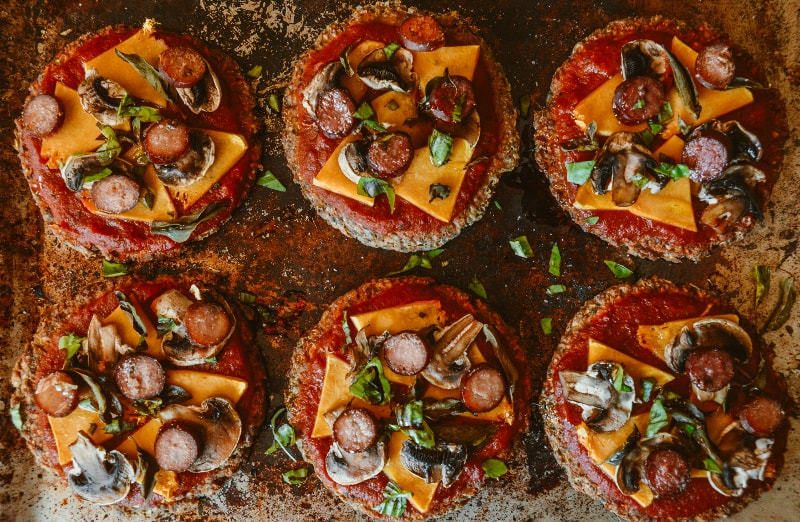
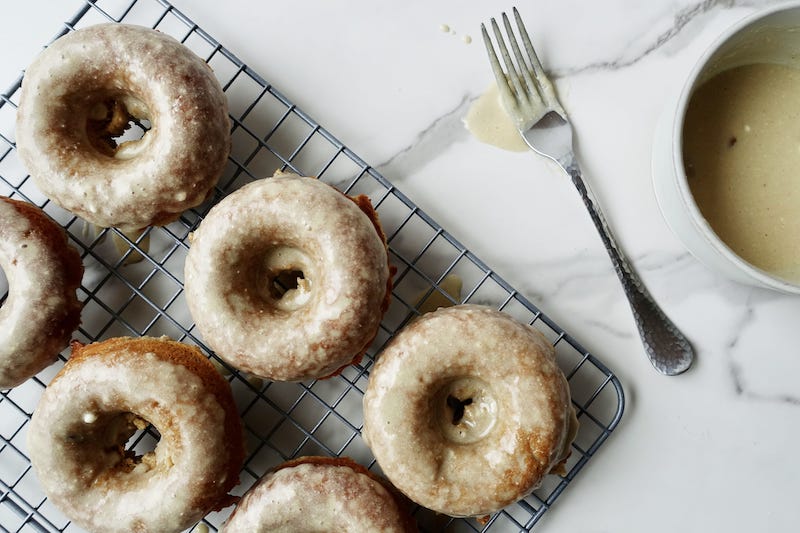
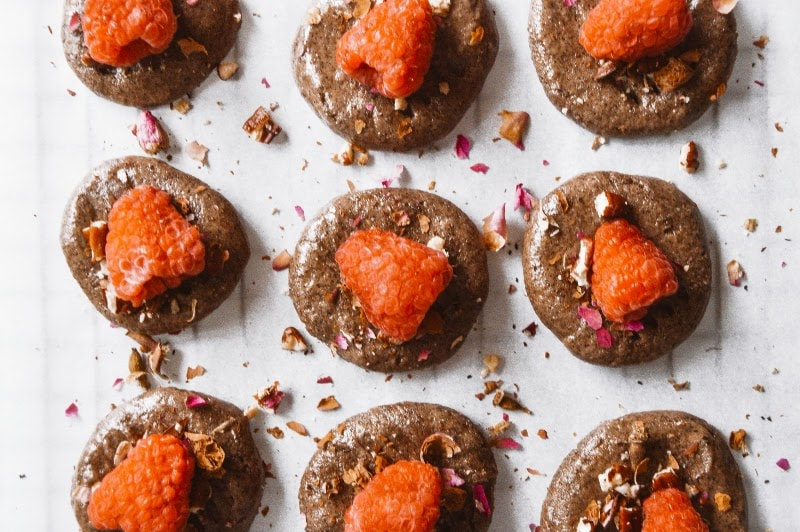

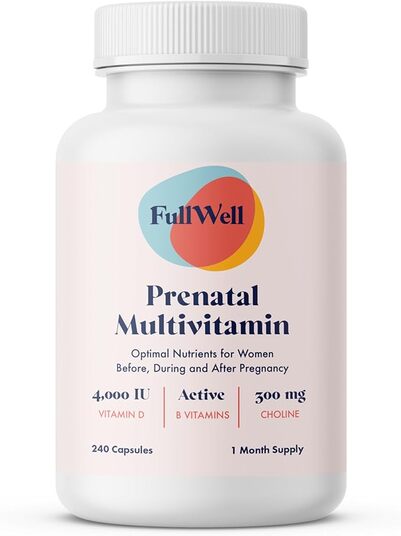
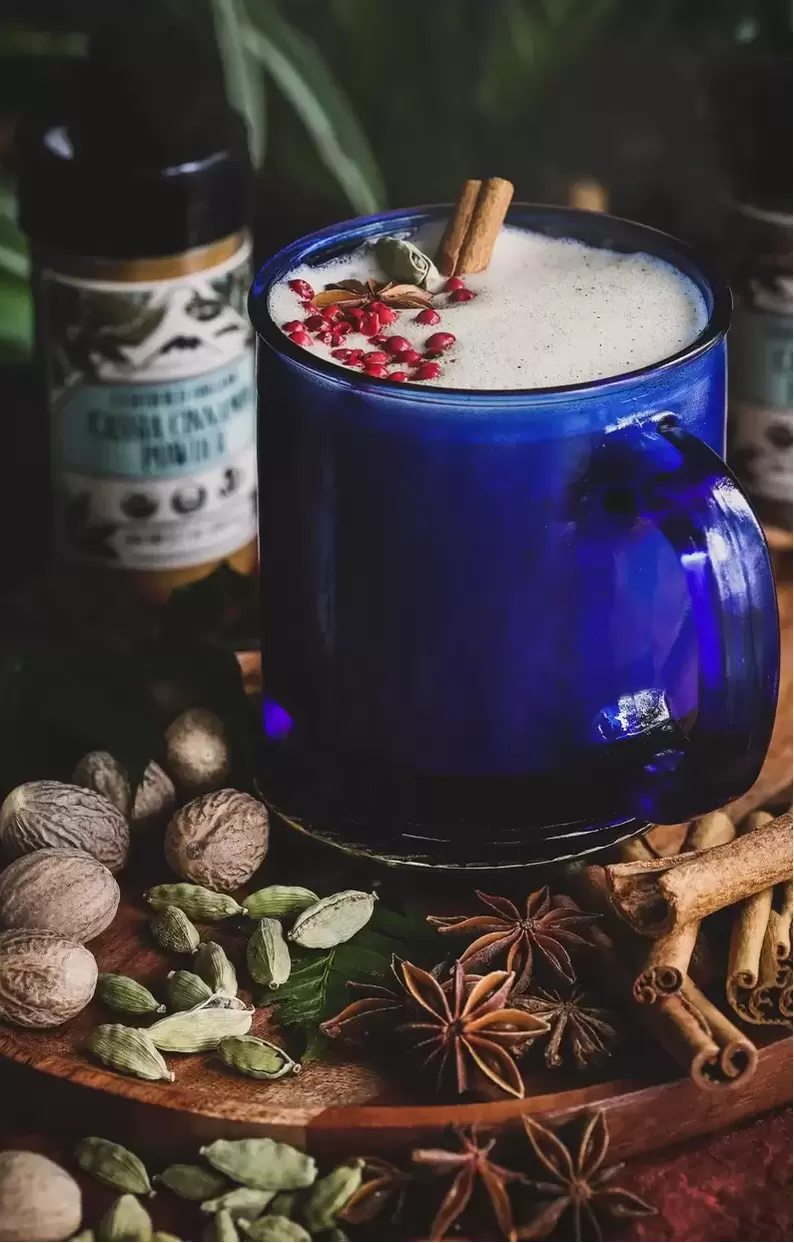
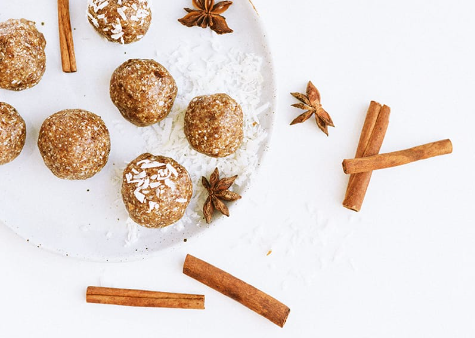

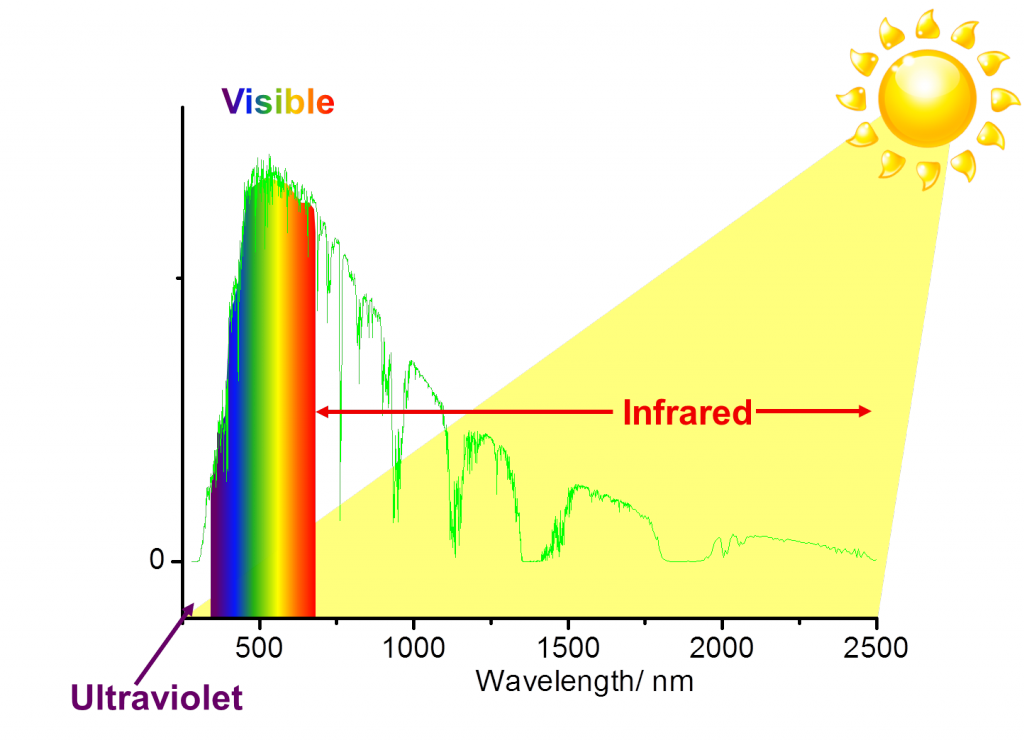
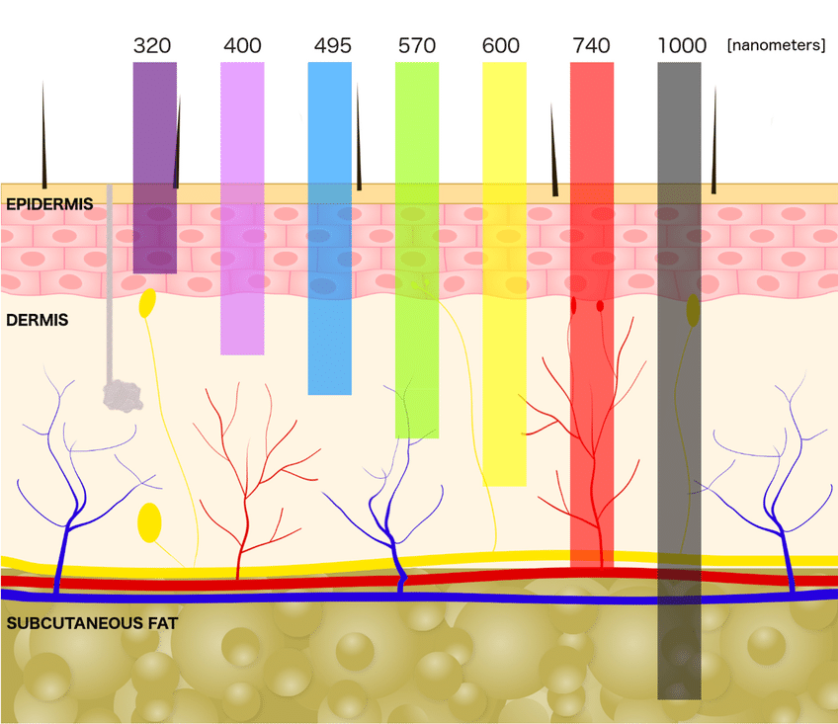
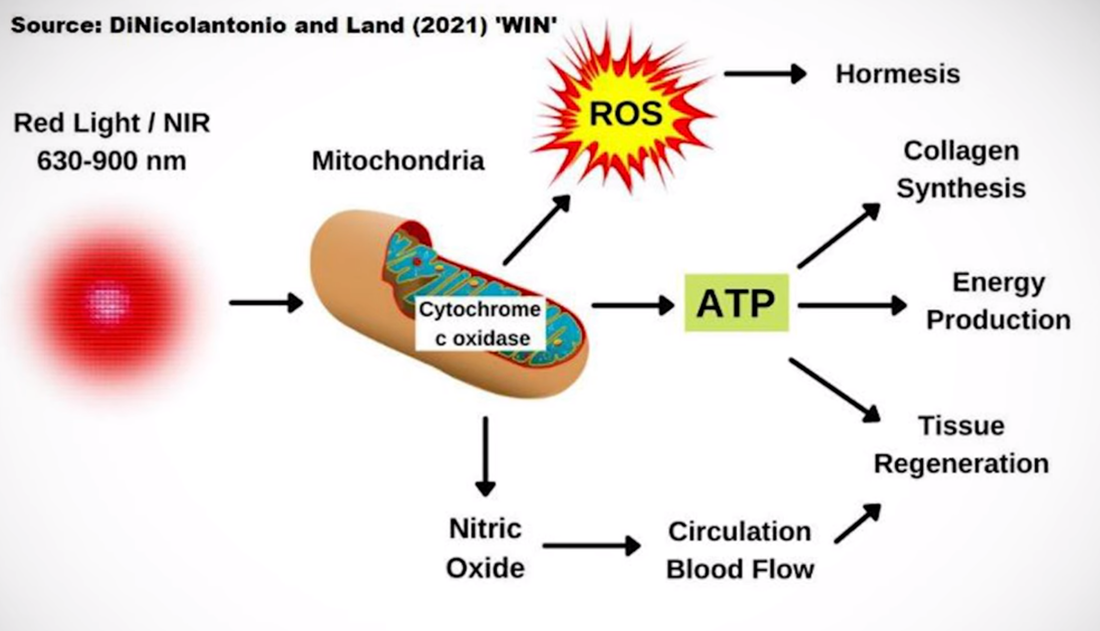
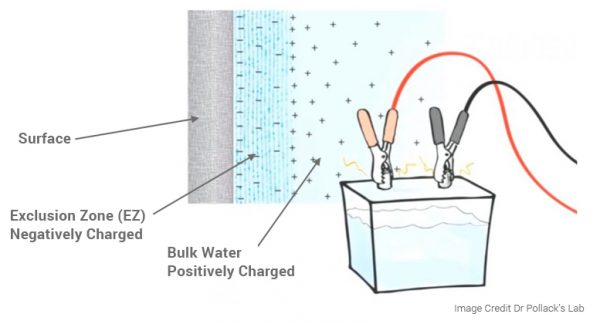

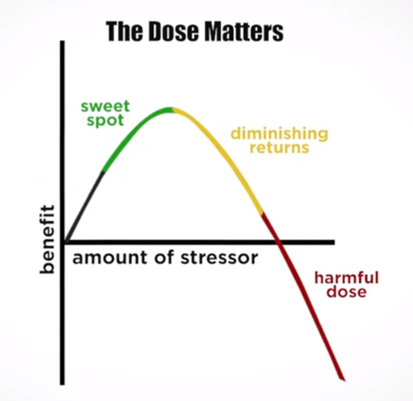

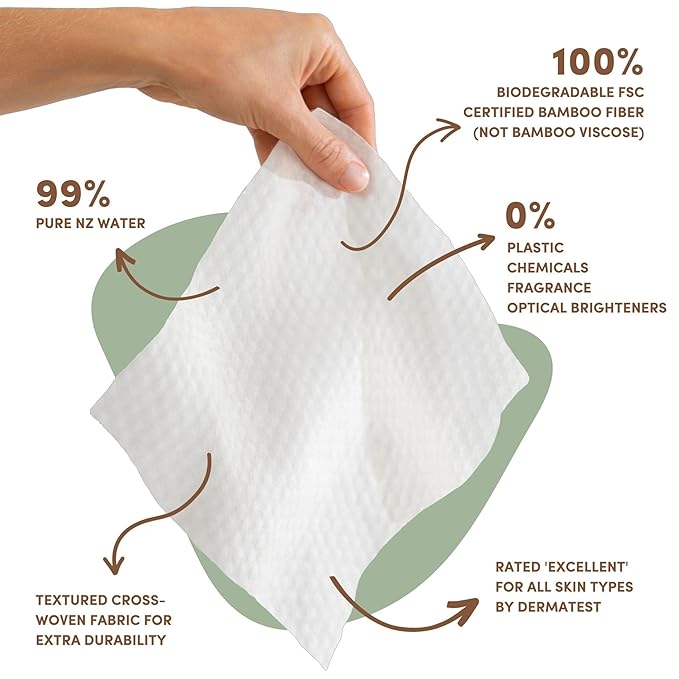
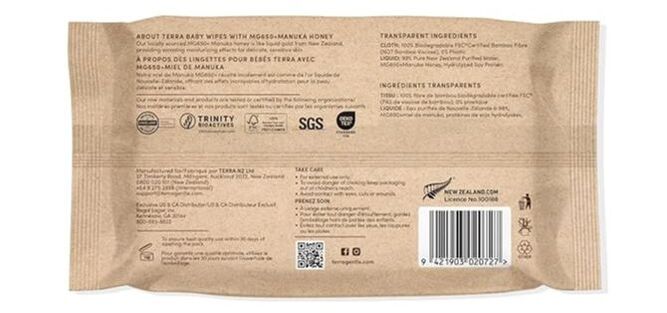

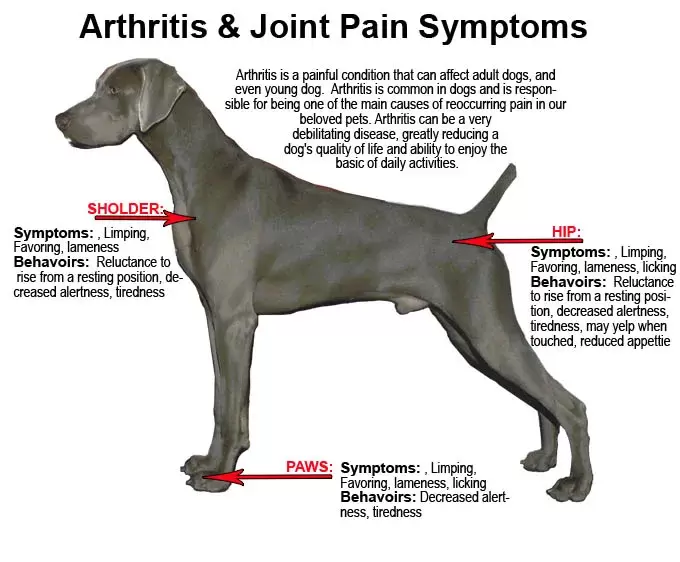

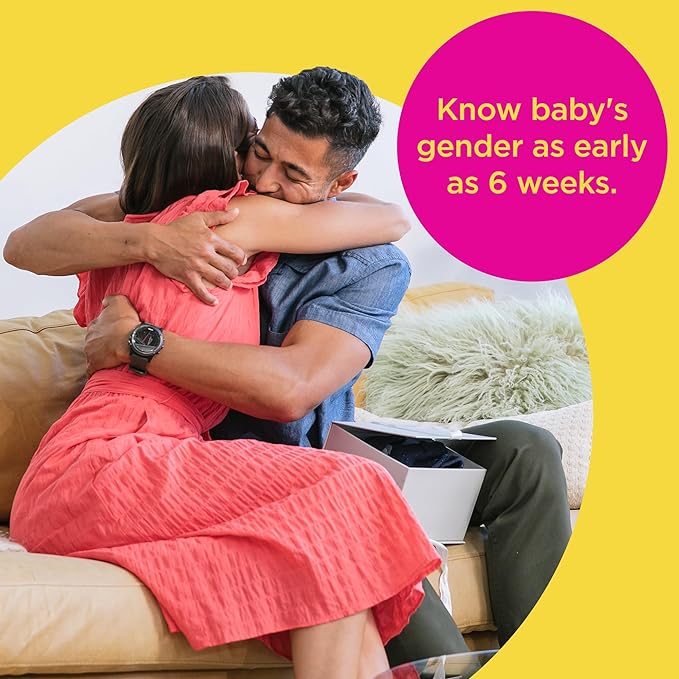

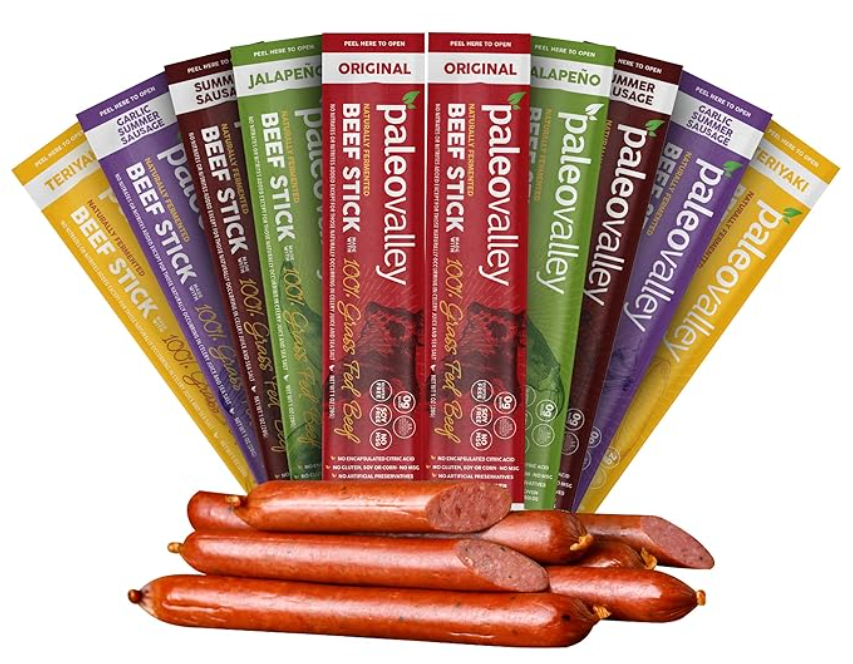
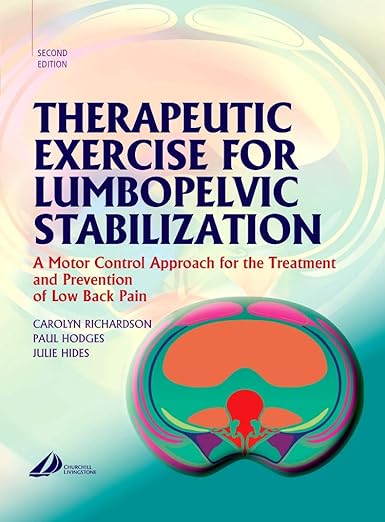


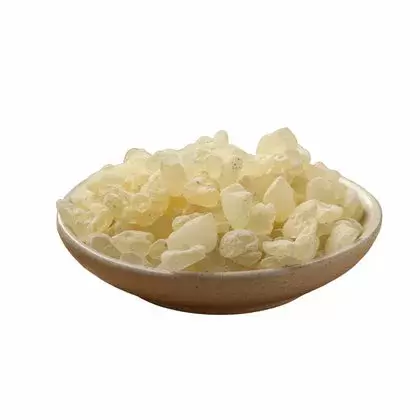
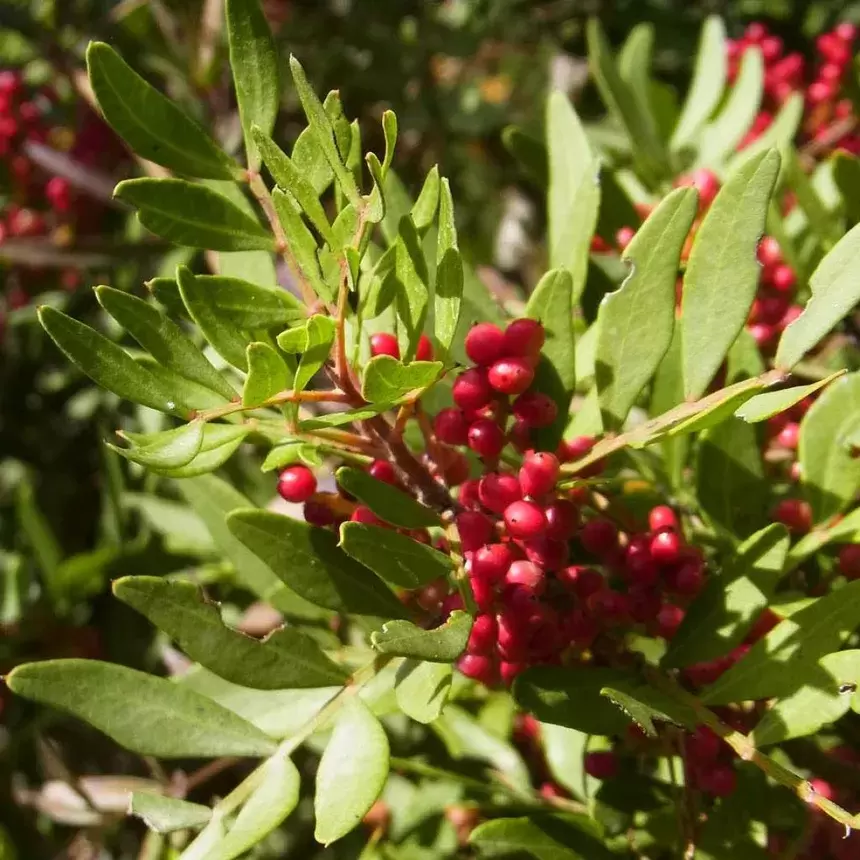

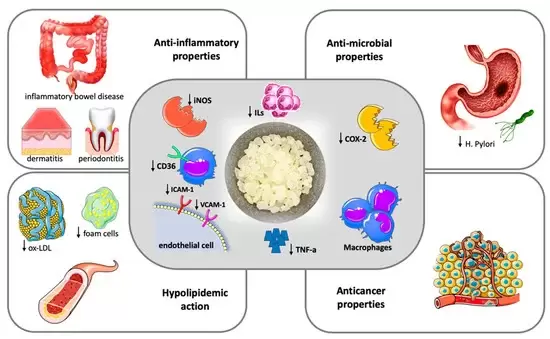
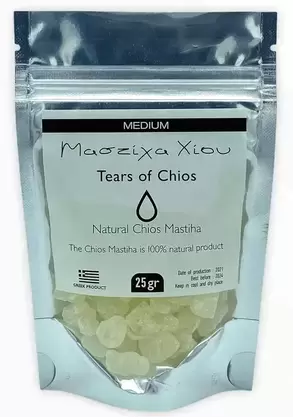
 RSS Feed
RSS Feed

